Bestiary, Animals
Auroch
Large variety of cattle. Mostly placid, but they can get ornery like a water buffalo if threatened. They have curving horns like a mountain ram.
Quadruped, Wild Animal
ST: 23* HP: 23 Speed: 5
DX: 9 Will: 10 Move: 8
IQ: 4 Per: 8
HT: 11 FP: 11 SM: +1, 1,000-2,500 lbs.
Dodge: 8 Parry: 7(4) DR: 1 (Tough Skin)
Horns (9): 2d+2 imp; Reach C
Trample (9): 2d+3 cr
Source: GURPS Bestiary 3e
*ST range 20-27 depending on weight
Targa
Three headed reptilian beast, very vicious, very dangerous, kind of like a hydra. Flightless, it looks like a stocky lizard with three heads on short, snaky necks. Its brain is at the base of the necks, much like a puppeteer’s, protected by a thick skull/pelvis. Its four legs have strong, sharp claws, although they are used more for digging nests/warrens than for fighting. It uses its toothy heads for that. Adults can get up to about 20’ in length, standing 6’ high at the shoulder (the heads can reach to about 10’). Color is a mottled earthy brown/grey. ST-2 cutting (7d-1 cutting, x3, full coordination), ST bashing (7d-1 cr, tail swipe). Inhabits drier areas, and makes its warrens in sandstone outcroppings. A southern creature, usually only encountered south of the Klernaktha territories.
ST 60, DX 15, HT 12/50, IQ 5, DR6 MV 12 Dodge 10 (12 when sped up).
Like Grendels, they have a superoxygenator for their bloodstream that gives them Great Haste (Altered Time Rate 1) for up to 20 turns. When it is active, they breathe out steam; this has resulted in prevalent rumors that it is a fire-breathing beast.
Trihorn Gazelle like animal, with two large horns arcing back from its head, and a single short horn sticking up between them. 4’ high at the shoulder, they tend to prefer wide open spaces like plains, although varieties also live in scrub lands. Same stats as a a gazelle. Dragon Dragons come in several types. Most breathe fire (except the faerie dragons who don’t have breath weapons, and the serpentine dragons that have poison instead). Faerie Dragons Smallest of the dragons, they have a wingspan of about three feet, and a similar length. They are slender, and about as smart as a dog. They can be trained, and are valued as pets. They look very much like the illustration of the Butterfly-Dragon in the Dreamlands Bestiary: Sargasso seahorse like with butterfly wings. They can exude psychotropic chemicals when threatened; these cause temporary loss of senses (sight, hearing, taste/smell, touch, proprionic, balance) for 1d hours. 3d6: 3-6 one sense; 7-9 two senses; 10-12 three senses, 13-15 four senses, 16-18 five senses. HT roll to resist (for each sense affected), the amount the roll is made by reduces the time by an hour. Even on a save, the sensory information is a bit scrambled for a few seconds, allowing the dragon to escape. ST 10, DX 14, IQ 6, HT 12, HP 10, Move/Dodge 12/7, DR 1, Damage 1d-1 cut, Size 1 hex, Weight 60 lbs. Great Drake
The least common are the great drakes, hexapods with four legs, two wings, and a tail. They are also the smartest of the dragons; they tend to be smarter than most humans. At least +2 IQ, Magery (up to 3 levels). Breath weapon is flame that is magically generated (so it acts as the more “traditional” breath weapon, not like the wyvern’s sputum). Some know humanoid languages. It is traditional to address them as “Var” as an honorific, much like “m’lord”. They expect that out of “lesser beings” and ephemerals. They are even longer lived than Elves, and consider Elves “ephemeral”. They are immortal, as far as anyone knows (Elves recount stories about Dragons mentioning times before the Elves “walked upright”). Kler’naktha think that the Dragons are messengers of the gods.
Drakes are intelligent, and have the ability – though not always the desire – to speak human languages. Dragons are motivated by pride and greed – both for food and for treasure. They breed in mountain fastnesses. A newly hatched drake is about the size of a man. He immediately sets out to find his own territory. Most perish at the hands of men, monsters, or other dragons. A few survive. Dragons are never common. It takes a large territory to provide enough fresh meat for such a beast; a full-grown drake can eat two cows a week. Even a hatchling eats as much as a man! However, see Rumors, below. Dragons are born knowing their own language. Any drake but a hatchling will probably know other languages as well. Dragons continue to get larger, older, and wiser throughout their lifetimes. They grow very slowly, but never get weak or senile. They are said to be immortal, dying only as a result of violence.
See FB 83-84 for stats. Serpentine Dragon (Wyrm) The next most common is the serpentine dragon, which is basically a snake with wings. Also called Ketziils Kwaatili (from Mekiitagi for “flying stranglers”), they will often attack by trying to constrict the target’s neck. The larger ones (30’ wingspan) will just grab you, fly off with you, and drop you. They tend to be less smart than humans (-1 IQ). Their stats are otherwise like the Great Drakes, above.
Wyvern The most common is the wyvern-type dragon, two wings, two feet, much like Skyrim’s or Game of Thrones dragons, and can have up to a 40’ wingspan. They tend to like mountainous areas, nesting in caves. Breath weapon is a napalm-like chemical that is generated in organs along the jawline, and spit out at targets; it ignites in air. It is not a stream; it is a glob of sputum.
ST: 20-30 DX: 14 IQ: 6 HT: 14 HP 24-30 Move/Dodge: 20/10 DR: 3 Damage: * Reach: C-2 Size: 10 hexes Wt: 800-1,000 lbs. Habitats: M, D, F
They are solitary diurnal creatures found in remote wildernesses, and seldom come close to civilized lands (they tend to get hunted, fast!). A wyvern will strike with its tail (2-hex reach) from above, then land to carry off its prey; it can carry up to Medium encumbrance. Its talons are used for grasping its prey, doing 1d-1 cutting damage in close combat. On the ground, its Speed is reduced to 3, and Dodge to 7.
Hydrae Serpent-like creature with six to nine heads, each linked to each other via a mindshare. They range in size from a foot long (Dwarf Hydra, highly poisonous) to twenty feet long (Giant Hydra) and most varieties are poisonous. All are carnivorous and will eat carrion. There are over a dozen known varieties, and sages think that there are three times that that haven’t been catalogued. They are usually quite territorial and aggressive. They have fangs and ripping/tearing/chewing teeth and chew their food (biting off pieces with all but one head, which acts as a lookout they do not swallow it whole like a snake. They use clefts in rocks, caves, hollow logs, and similar places for lairs. They also will modify a location to be more suitable and safer for them, using their many heads like hands as manipulators. Their standard tactics involve ambush from camouflage (most species have natural coloration that allows them to do this at skill level 15-18), and attacking with several (but never all) its heads at once. One or more heads usually serve as lookout and reserves. They are quite clever, and some species can live quite a long time (like many reptiles). It is known for them to acquire learned behaviors; although no one knows if they can teach each other (it is considered very unlikely, however, since they tend to be rather solitary creatures with little care given to offspring). Bush Hydra
Living in scrub lands, it is camoed, has leaf-like protrusions, and looks like a plant. It is an ambush hunter. Follow-up poison with a 1 minute delay and a HT roll to resist. Inflicts 1d+1 toxic damage, repeating at one hour intervals for 8 cycles. A victim who loses 1/3, 1/2, or 2/3 HP has -2, -3, or -4 DX, respectively. ST 7-10, DX 13, IQ 5, HT 12/12-16. MV/Dodge 10/6, DR 2, Damage 1d-3 to 1d-2 per bite plus poison, Reach C, Size: 4-7 feet long, (1 Hex), Weight 12-30 lbs. Cave Hydra
Lives in caves. Its flesh is considered a delicacy by the Dwarves, but no one else shares their views. Follow-up poison with a 1 minute delay and a HT roll to resist. Inflicts 1d+2 toxic damage, repeating at one hour intervals for 6 cycles. A victim who loses 1/3, 1/2, or 2/3 HP has -1, -2, or -3 DX, respectively. ST 9-14, DX 13, IQ 6, HT 15/15-20, MV/Dodge 7/6, DR 2, Damage: 1d-2 to 1d-1 per bite, plus poison, Reach C, Size: ranges from 4 to 8 feet long (considered 1 hex), weight 20-40 lbs. Albino, and visually blind to boot, but they have IR vision. Common Forest Hydra
Colored a mottled green and brown, with bits of black, the Forest Hydra is probably the most common hydra in the western portion of the Realm. They generally won’t attack humans, although children are at risk. Follow-up poison with a 1 minute delay and a HT roll to resist. Inflicts 1d+2 toxic damage, repeating at one hour intervals for 6 cycles. A victim who loses 1/3, 1/2, or 2/3 HP has -1, -2, or -3 DX, respectively. They inhabit forests, and do not climb trees as a habit. ST 9-14, DX 13, IQ 6, HT 15/15-20, MV/Dodge 7/6, DR 2, Damage: 1d-2 to 1d-1 per bite, plus poison, Reach C, Size: ranges from 4 to 8 feet long (considered 1 hex), weight 10-30 lbs. Common Jungle Hydra
Follow-up poison with a 1 minute delay and a HT roll to resist. Inflicts 1d+2 toxic damage, repeating at half hour intervals for 6 cycles. A victim who loses 1/3, 1/2, or 2/3 HP has -1, -2, or -3 DX, respectively. They inhabit jungles, are arboreal, and have the annoying habit of dropping upon victims and biting repeatedly. ST 9-14, DX 13, IQ 6, HT 15/15-20, MV/Dodge 7/6, DR 2, Damage: 1d-2 to 1d-1 per bite, plus poison, Reach C, Size: ranges from 4 to 8 feet long (considered 1 hex), weight 10-40 lbs. Desert Hydra
This type is a sandy brown in color, with other earth tones (primarily browns and greys) mixed in. Follow-up poison with a 1 minute delay and a HT roll to resist. Inflicts 2d-1 toxic damage, repeating at one hour intervals for 6 cycles. A victim who loses 1/3, 1/2, or 2/3 HP has -1, -3, or -5 DX, respectively. ST 12-18, DX 13, IQ 6, HT 15/20-30, MV/Dodge 7/6, DR 3, Damage: 1d to 1d+1 per bite, plus poison, Reach 1, Size: ranges from 6 to 12 feet long (considered 2 hexes), weight 30-60 lbs. Dwarf Cave Hydra
As Dwarf Hydra, but albino with bad sight and IR vision. Dwarves consider them good eatin'. Dwarf Hydra
highly poisonous, but is generally afraid of creatures bigger than twice its size. Follow-up poison with a 1 minute delay and a HT-3 to resist. Inflicts 2d toxic damage, repeating at half hour intervals for 6 cycles. A victim who loses 1/3, 1/2, or 2/3 HP has -2, -4, or -6 DX, respectively. They inhabit forests, both on the forest floor (hiding in ground cover) and arboreally. ST 3-5, DX 13, IQ 4, HT 15/4-8, MV/Dodge 3/6, DR 0, Damage: 1d-4 per bite, plus poison, Reach: C, Size: about a foot long, usually has eight heads, Weight: 1-2 lbs. Occasionally seen as pets (requires that the hydra be imprinted at birth with the owner, but is still really dangerous) by the brave and foolish. Make great reputation getters, though (who can forget the guy with an eight-headed, extremely poisonous snake wrapped around his shoulders). Giant Hydra
 Inhabits swamps, and is probably the most feared hydra, due to size and rumors. Its poison is actually the weakest of the hydras, but it is physically the strongest of them (and the most intelligent). There are legends about the Giant Hydra being able to speak, and actually helping people (this is considered a “country myth”, with little basis in reality). While it is quite smart, it lacks the equipment needed to speak, and spellcasting has never been reported. It is equally at home on land or in water. Follow-up poison with a 1 minute delay and a HT+1 roll to resist. Inflicts 1d-1 toxic damage, repeating at one hour intervals for 6 cycles. A victim who loses 1/3, 1/2, or 2/3 HP has -1, -2, or -3 DX, respectively. ST 20-25, DX 13, IQ 7, HT 15/25-50, MV/Dodge 7 (10 swimming)/6, DR 4, Damage: 1d+1 per bite, plus poison, Reach 2, Size: ranges from 15 to 20 feet long (4-6 hexes), weight 150-300 lbs. Can also constrict for 1d.
Grass Hydra
Inhabits swamps, and is probably the most feared hydra, due to size and rumors. Its poison is actually the weakest of the hydras, but it is physically the strongest of them (and the most intelligent). There are legends about the Giant Hydra being able to speak, and actually helping people (this is considered a “country myth”, with little basis in reality). While it is quite smart, it lacks the equipment needed to speak, and spellcasting has never been reported. It is equally at home on land or in water. Follow-up poison with a 1 minute delay and a HT+1 roll to resist. Inflicts 1d-1 toxic damage, repeating at one hour intervals for 6 cycles. A victim who loses 1/3, 1/2, or 2/3 HP has -1, -2, or -3 DX, respectively. ST 20-25, DX 13, IQ 7, HT 15/25-50, MV/Dodge 7 (10 swimming)/6, DR 4, Damage: 1d+1 per bite, plus poison, Reach 2, Size: ranges from 15 to 20 feet long (4-6 hexes), weight 150-300 lbs. Can also constrict for 1d.
Grass Hydra
Inhabits grasslands, this hydra is green in winter and spring, but changes color to a golden color in summer and fall, to better match the grass. Like it’s close relative the spotted hydra, this one is an active hunter, and is very quick. Follow-up poison with a 1 minute delay and a HT roll to resist. Inflicts 2d toxic damage, repeating at half hour intervals for 4 cycles. A victim who loses 1/3, 1/2, or 2/3 HP has -2, -4, or -6 DX, respectively. ST 9-12, DX 14, IQ 6, HT 14/14-18. MV/Dodge 10/6, DR 2, Damage 1d-2 to 1d-1 per bite plus poison, Reach C, Size: 5-9 feet long, (1 Hex), Weight 12-35 lbs. River Hydra
Inhabiting waterways, they are a light to dark green mottled with brown in color. Aquatic, almost exclusively, although they have some ability to move on land. Follow-up poison with a 1 minute delay and a HT roll to resist. Inflicts 2d-1 toxic damage, repeating at one hour intervals for 6 cycles. A victim who loses 1/3, 1/2, or 2/3 HP has -1, -2, or -4 DX, respectively. ST 12-18, DX 13, IQ 6, HT 15/20-30, MV/Dodge 7 (12 swimming)/6, DR 2, Damage: 1d to 1d+1 per bite, plus poison, Reach 1, Size: ranges from 10 to 16 feet long (considered 2 hexes), weight 60-120 lbs. Rock Hydra
Inhabits just about any rocky terrain in any climate, ranging from deserts to badlands to mountains. Looks like a lumpy grey rock unless moving, in which case it looks like a moving lumpy grey rock—with teeth. Follow-up poison with a 1 minute delay and a HT-2 roll to resist. Inflicts 1d+2 toxic damage, repeating at one hour intervals for 6 cycles. A victim who loses 1/3, 1/2, or 2/3 HP has -1, -2, or -3 DX, respectively. ST 15-22, DX 13, IQ 6, HT 15/25-30, MV/Dodge 6/6, DR 5, Damage: 1d to 1d+1 per bite, plus poison, Reach 2, Size: ranges from 10 to 15 feet long (considered 4 hexes), weight 40-90 lbs. It has excellent camouflage, and is very hard to spot before it’s too late. Sand Hydra
Inhabiting sandy deserts, this hydra hides just beneath the sand, lying in wait for some animal to get too close. It is a nearly uniform sandy brownish grey in color, with occasional darker scales. Follow-up poison with a 1 minute delay and a HT-2 roll to resist. Inflicts 2d-1 toxic damage, repeating at half hour intervals for 6 cycles. A victim who loses 1/3, 1/2, or 2/3 HP has -1, -3, or -5 DX, respectively. ST 5-7, DX 13, IQ 4, HT 15/6-10, MV/Dodge 6/6, DR 1, Damage: 1d-3 per bite, plus poison, Reach: C, Size: about 3’ long, Weight: 3-5 lbs. They are basically invisible until they strike (since they are hidden until then). Scyllic Hydra (Giant Sea Hydra)
Mythical Hydra species that inhabits the oceans. Reputedly immense, its length is unknown since one has never been measured (or seen by qualified observers). The only things “known” about them are: they can eat a man in a single gulp; they are bigger than ships; they can crush ships like a beer can. It is not known if they are poisonous, as all of the stories about them never mention anyone surviving being bitten (besides, what good would poison do for something that swallows something as soon as it bites it?). Estimated stats: ST 400+, DX 13, IQ 7+ (stories indicate a rather high problem solving ability, but this is unlikely), HT 15/100+, MV/Dodge 12 swimming/6 (although it is usually so big that it probably doesn’t bother), DR 15, Damage: enough.
Spotted Hydra
Inhabiting open areas (plains, fields, etc.), this hydra is an active hunter. Its coloration is primarily brown, with greenish and black spots mottling its scales. It is very quick. Follow-up poison with a 1 minute delay and a HT-1 roll to resist. Inflicts 2d toxic damage, repeating at half hour intervals for 4 cycles. A victim who loses 1/3, 1/2, or 2/3 HP has -2, -4, or -6 DX, respectively. ST 9-14, DX 13, IQ 6, HT 15/15-20, MV/Dodge 10/6, DR 2, Damage: 1d-2 to 1d-1 per bite, plus poison, Reach C, Size: ranges from 4 to 8 feet long (considered 1 hex), weight 10-30 lbs.
Swamp Hydra
Inhabiting swamps, they are a light to dark green mottled with black and brown in color. Prefer moist environments, and are at home on land or in water (and actually prefer water). Follow-up poison with a 1 minute delay and a HT roll to resist. Inflicts 2d-1 toxic damage, repeating at one hour intervals for 6 cycles. A victim who loses 1/3, 1/2, or 2/3 HP has -1, -2, or -4 DX, respectively. ST 12-18, DX 13, IQ 6, HT 15/20-30, MV/Dodge 7 (12 swimming)/6, DR 2, Damage: 1d to 1d+1 per bite, plus poison, Reach 1, Size: ranges from 6 to 12 feet long (considered 2 hexes), weight 30-60 lbs. Troll-kin Hydra (regenerating hydra)
Mythic hydra species that, like Trolls, regenerates. According to legend, when a head is cut off, two grow in its place. It seems to conform to a large Forest Hydra in looks and habits, but is much larger. Type A poison (HT -2), 1d+2 damage. ST 15-22, DX 13, IQ 6, HT 15/25-30, MV/Dodge 6/6, DR 5, Damage: 1d to 1d+1 per bite, plus poison, Reach 2, Size: ranges from 10 to 15 feet long (considered 4 hexes), weight 40-90 lbs. Stun Lizard
Marsh/jungle dwelling crocodilians with an enlarged brain case, in which is an organ that can cause a stunning effect on prey. This is similar (in function) to the sonic stunning effect that cetaceans can accomplish, although in this case it’s arcane/magical, rather than sonic. Stats are the same as a Nile Crocodile, although the snout is more rounded (like an alligator). The stunning effect overloads the neural system of the victim; treat as the spell “Stun” (Body Control). The effects of this is severe pain and a "whiting out" of vision. ST 20-28, DX 14, IQ 3, HT 13, HP 24-30, MV/D 8/7, DR 4, Damage 1d+2 cut, Averages 13-16 feet long, although specimens 20 feet long have been found. It's tail can strike at anyone in its back hexes. The tail does 1d damage, and can knock people over (Contest of ST). Flickerbugs (Displacer Beasts)
Body like a chitinous puma about 3' high at the shoulder. Dark in color, iridescent black. Two horny striker arms emerge from where the shoulders would be if this was feline. They do impaling damage and can attack anything within 180 degrees of forward. Reach 1. When not in use, they fold back over where shoulderblades would be. Its primary ability combines limited invisibility with simple illusion. It can project its image up to 6' away from its actual location. Facing and pose remain the same, however. Note that although it has the basic body plan of a feline, it isn't one. It has more in common with insects than placental mammals. Eyes are compound, and it has peripheral vision (not quite 360). It can see color. While visual acuity may not be as good as a cat's , it has small antennae fringing the head that detect scent for miles. They hunt in small packs of 2-4, like wolves. Tactics are similar: strike and move back to let others pack members attack. Find an opening, and attack again. Typical tactics will have one member pounce on a foe, while others attack with the strikers once foe is down. This reduces defenses and makes foe more likely to be taken out. In combat, they are pretty devastating, since trying to hit them is rather difficult, since melee is a mass of images skipping all over the place, making it very confusing. Since there are multiple flickerbugs, their projected images may overlap. The trick to finding out where they are is to see their effect on the landscape (footprints, moving foliage, etc). Or wrestle with them, once you find it, hold onto it and hope someone helps out…. ST 18, DX 13, IQ 4, HT 10, Will 10 Per 12, Hits 18 DR 3 (Chitin + toughness)
Wt 150 kg Basic Speed 6 MV 12 (14 sprinting) Dodge 10 (3+ Basic Speed+ combat ref)
Attacks: bite 1d+2 cut (chelicerae claw 1d+2 cut; Striker 1d+2 imp
Brawling-15, Wrestling-15, Stealth-15 Lunefish (CotN): Packs of aquatic monsters which sing to bring on madness in people. They are strongest during the night hours and the full moon. They prey on people, and find terrified people more tasty (likely due to higher levels of cortisol?) Found along the coasts. Sometimes they will swim up rivers, although they prefer salt water. They are also pretty common in the sewers of coastal cities. Source of mind-altering alchemical ingredients. Mazeworms (CotN): Mazes of living underground tunnels, full of noxious fumes, which have streams of acidic bile running through them. The nexus of the tunnels contains the creature’s brain. The creature can attack by using convulsions of its body, squeezing (easily done since it takes effort and bracing structures to keep the tunnels open), or by using an internal pseudopod to grapple someone, pulling them towards a mouth nearby. Circumplasm (the bile-like fluid) is a spell component for the Acid spells (those that are known and is used in several alchemical preparations, as is the flesh. First discovered by Dwarves, when they accidentally tunneled into one. It took a long time to figure out what it was, and kill it. They are rare, but common enough for the Dwarven tunneling companies to have procedures written up about them. But they aren’t just found in the mountains. They can be found just about anywhere underground. They are geobiologic organisms of immense size (See https://www.mysteryfleshpitnationalpark.com/), but can be "mined" for lucrative materials (such as amniotic ballast, which has aphrodesiac effects, among other things). Mockers (CotN): These shapeshifters can take the forms of animals of lesser intelligence than themselves. When motionless, they appear to be statues, so they are often found in cities. They hunt and eat people who have magical abilities (typically those with Magery, although Elves, with their innate “hedge magic” are targets too). When they consume their prey, they are actually feeding on the mana contained. Needlers (CotN): Alchemical humunculi things that are used by the murderous alchemist types. These balls of mummified flesh covered with stiff bone needles travel by rolling or by floating. They drink blood by extending and retracting their needles. Good adventure fodder. To create one of these horrors requires the Create Needler spell, some alchemy, and of course, at least one body. Puppeteers (CotN): Small, slimy creatures with eight legs and lumpish heads on serpentine necks. They burrow under the skin of a persons’ back and attach themselves to the nervous system. They manipulate the person by controlling his access to his memories and by clenching their muscles (causing the victims extreme pain).They are antimemetic. Slitherwens (CotN): These black land eels live in shadows, and can cling to walls and ceilings using their mucus. They eat small animals and infants. Their venom causes victims to grow what amounts to a skin tumor, which act as portals to allow the slitherwens to travel from one place to another. Roarers: Also known as the “Scourge of the Skies” by the Aarakocra, they live on the highest mountaintops, typically in caves. They are very much like pterodactyls crossed with manta rays, but with a pair of methane-powered pulse-jet pods, one in each wing at the wing root. Once ignited, they are able to fly at up to speeds of 250mph or so. They are carnivorous, and need to eat quite a lot due to their fuel requirements, although their innate magic helps with this. They also have heat/fire resistance (in their engines) and a magical organ that has levitational properties that effectively reduces their weight without having to have hollow bones. They have a pair of double jointed legs that have a long claw (much like a velociraptor) that they use to stab and grab prey as they fly past. They will often turn off their engines and glide into an attack as a way to sneak up on prey. Aarakocra are a favorite prey animal; the best defense is to hopefully see them before they see you, and dive towards the ground, losing yourself in the ground clutter. Fortunately, they are very rare, and require couple of thousand square miles of territory. (Unabashedly stolen from the buzzbombs of the Gaea Trilogy and the Skewers of Expedition.). 10m wingspan, 400lbs, ST 18, DX 13, IQ 7, HT 12, HP 24. Callous, No Fine Manipulators, DR 3 (tough skin), another 4 DR (heat/fire only). Here is a sound file for what these things sound like when flying. Firesaurs Built like pterodactyls, but like the roarers, have a methane-burning pod at the root of each wing. Unlike the roarers, though, firebats can only burn methane for a second or two before their fuel reserves run out. So they will “spurt” for a quick acceleration when needed, but for the most part, they soar like hawks. They are carnivorous, and are primarily scavengers, like vultures. Although they will eat birds or mammals smaller than them, when they can find and catch them. Mostly, however, their quick jets are for evading predators. They have tough skin (DR 2) and are fire resistant (DR 4 vs fire).
Giant Centipede
SM -3 Vermiform, Wild Animal
Built like pterodactyls, but like the roarers, have a methane-burning pod at the root of each wing. Unlike the roarers, though, firebats can only burn methane for a second or two before their fuel reserves run out. So they will “spurt” for a quick acceleration when needed, but for the most part, they soar like hawks. They are carnivorous, and are primarily scavengers, like vultures. Although they will eat birds or mammals smaller than them, when they can find and catch them. Mostly, however, their quick jets are for evading predators. They have tough skin (DR 2) and are fire resistant (DR 4 vs fire).
Giant Centipede
SM -3 Vermiform, Wild Animal
Adult: 8 lbs.
ST 4; DX 12; IQ 1; HT 10
HP 4; FP 10; Will 10; Per 10
Speed 5.5; Move G5-W1; Dodge 8
DR 2 (Tough skin)
Attacks: Bite 1d-5 cut with Poison
Physical Traits: Dark Vision; High Pain Threshold; Lifting ST +2; Striking ST +1 (Bite only)
Skills: Brawling-12 •Poison (F): Affliction 2 (HT-1; Extended Duration, x30; Follow-Up, bite; Moderate Pain; Secondary, Paralysis) Description: Giant Centipedes are about 2 feet long and can be found in both subterranean and dark, damp forest environments, mainly in the jungles. They attack anything that they think might be food. Their bite won’t penetrate armor but if they bite flesh, they will inject a painful venom that can cause paralysis using their toxicognaths. See https://www.youtube.com/watch?v=aMYxRIByCQE for some squicky but cool stuff on centipedes. Giant Cave Centipede Vermiform*, Wild Animal
ST: 13* HP: 13 Speed: 6.5
DX: 14 Will: 9 Move: 6
IQ: 2 Per: 10
HT: 12 FP: 12 SM: +4*
100-500 lbs.
Dodge: 9 Parry: — DR: 0
Bite (16): 2d imp* with Venom; Reach C
•Venom (F): Type F 1d
Source: GURPS Bestiary 3e
*ST range 9-16; Effectively vermiform; Striking ST range 20-22; SM range +1 to +4
Very large, very dangerous; they can grow up to 25 feet long. They live deep in cavern systems, typically hunting cavern critters, or, more often than anyone would like, dwarves. Giant Fire Beetle SM -3 Insect, Wild Animal
ST 6; DX 10; IQ 1; HT 10
HP 6; FP 10; Will 10; Per 10
Speed 5; Move G5-W1; Dodge 8
DR 2 (Flexible [carapace])
Attacks: Bite 1d-1 cut
Physical Traits: Dark Vision; High Pain Threshold; Lifting ST +4; Striking ST +7 (Bite only)
Quirks: Glowing glands behind eyes (Incompetence, Stealth)
Skills: Brawling-10
Description: Giant Fire Beetles are around 2 feet in length and are known for having a very powerful bite for their size. They will attack anything that they identify as food (sleeping adventurers qualify), although their glowing glands will often alert their prey. The glands are prized by wizards and alchemists, plus they are useful as they will continue to provide light (-5 vision rolls) for several days after removal. Insect Meta-Trait: Doesn’t Breathe (Oxygen Absorption), Extra Legs (total 6; cannot kick), High Pain Threshold, Horizontal, Injury Tolerance (No Vitals), No Fine Manipulators. Ogre (Template) SM +1
ST +7 [63]; DX -1 [-20]; IQ -3 [-60]; HT +2 [20]
HP +2 [4]; Per +3 [15]
DR 3 (Tough Skin, -40%) [9]
Physical Traits: Dark Vision [25]; Enhanced Move 1/2 (Ground) [10]
Social Traits: Bad Smell [-10]
Quirks: Uncongenial
Total Cost: 55 points Ogre Warrior, Advanced SM +1
ST 17; DX 9; IQ 7; HT 12
HP 19; FP 12; Will 7; Per 10
Speed 5.25; Move 5; Dodge 10
DR 3 (Tough Skin)
Attacks: thr 1d+2; sw 3d-1
Languages: Ogre (Gruntish)
Mental Traits: TL3
Templates: Ogre
Skills: Axe/Mace-14; Brawling-11; Shield-12; Wrestling-11
Total Cost: 95 points Ogre Warrior, Primitive SM +1
ST 17; DX 9; IQ 7; HT 12
HP 19; FP 12; Will 7; Per 10
Speed 5.25; Move 5; Dodge 8
DR 3 (Tough Skin)
Attacks: thr 1d+2; sw 3d-1
Languages: Ogre (Gruntish)
Mental Traits: TL 1
Templates: Ogre
Skills: Axe/Mace-14; Brawling-12; Wrestling-12
Total Cost: 85 points Reek
ST: – DX: – IQ: – HT: 5-20
Move/Dodge: 1/0 DR: 0 Damage: * Reach: C
Size: 1 hex Weight: 20-60 lbs. Origin: F Habitats: Sub, F, J
A reek is a nasty, slimy creature found in caverns, deep woods and jungles. It looks like a huge decaying lump of brown jelly, though there are some slight color variations. It lives by covering and dissolving organic matter, both living and dead. Reeks hate sunlight and are active any time that it isn’t too bright. They are usually solitary, though they can occasionally be found two at a time, as their mating season is year-round. Like worms, reeks are hermaphroditic. Reeks attack by contact, doing one hit of damage per turn. No DX roll is required – if they can reach the foe’s hex, they hit. Armor protects for a number of turns equal to its DR. They ignore impaling weapons, but cuts and blows do normal damage, as does fire. Reeks cannot fall down, be stunned, lose their balance, etc., and there is only the general body to hit. Reeks do not exactly lose consciousness, but become unable to move at 0 HT, and are destroyed when they are at -3×HT (there is no roll at -HT, etc.).
Most reeks cannot climb and aren’t fast enough to catch prey. They are most dangerous when unseen – IQ-2 roll to avoid stepping on one in your path! Anyone stepping into a reek can pull free only by making a roll against ST; otherwise, the creature must be killed to get it off. All rules about striking into close combat apply.
Some reeks can climb, and use trees or cave walls as platforms to drop from above onto unwary travelers.
Occasional reeks reach gigantic proportions. In general, multiply weight, hit points and damage by the number of hexes of size.
Reeks are not affected by Control Animal spells. Reeks, Magical
ST: – DX: – IQ: – HT: 5-20
Move/Dodge: 1/0 PD/DR: 0/0 Damage: * Reach: C
Size: 1 hex Weight: 20-60 lbs. Origin: F Habitats: Sub, F, J
Certain types of reeks have magical abilities powered by mana stored in their nuclei. These can cast spells at skill level 15, and store up to 15 “fatigue” points of mana at a time, recharging expended points at a rate of 1 per hour. Unless otherwise specified, treat these as normal reeks for combat purposes.
Other types of magic reeks can be created, ranging from the deadly to the silly.
Confusion Reeks cast a modified version of the Mystic Mist spell (p. 107), over a 3-hex radius area. The spell area must include the hex the reek is in, though it is not necessarily centered on it. Unlike the actual Mystic Mist spell, no Fright Check is needed. Instead, victims must make an IQ + Magic Resistance roll each turn or suffer disorientation. Disoriented victims may not choose the direction they wish to go in – roll randomly for each hex of movement. People with Absolute Direction are immune, and those who are not confused may lead others. Only the confusion reek is considered “native” to the Mist, and it can cast the spell in 2 seconds.
Decay Reeks can cast both Seek Food (p. M42) and Decay spells (p. 106). They will decay a party’s supplies, and eat the rotting remains when it is abandoned. (Seek Food senses the nearest source of food – use the Long Range Distance modifiers on p. B151.)
Glue Reeks leave a trail of magically Glued hexes wherever they go. Treat each hex that the reek spends 5 seconds in as being under the Glue spell (p. 106) for one minute. It cannot maintain the spell. Thus, a glue reek traveling through a cavern at 1 hex every 5 seconds will leave a trail of 12 glued hexes behind it, expiring at different times. They rarely travel in straight lines, and the hexes cannot be distinguished from those around them except with the Mage Sight spell (p. M49). Glue reeks ignore the limit of 15 fatigue that other reeks have.
A glue reek can sense anything caught in one of its glued hexes, like a spider sensing victims in its web. It will speed up to the normal reek move of 1 directly toward a victim – it is immune to its own spell, of course.
Daze Reeks cast the Mental Stun spell (p. 107). Anyone successfully resisting it is immune to that particular reek forever. A victim who fails his resistance roll and is attacked by the reek rolls to recover from the mental stun at +1 per hit taken from the reek.
Pleasure Reeks cast the Emotion Control spell (p. M59), instilling love and joy in their prey – roleplay it! Anyone failing the resistance roll is immensely attracted to the reek, and will even sit by it and take it into his lap. The immobile victim will continue to be lulled even as the reek consumes him, and will only be aroused to defend the reek!
Rust Reeks have the ability to corrode iron and steel. Their mana organs cast the Ruin spell (p. M51), but drastically speeded up in a manner mages have not been able to duplicate. Unlike other reeks, they are often found in groups of 3 to 10. These reeks digest oxidized metal rather than organic material. Rust reeks often live near other types of reeks, since they are not in competition for food.
For every 3 seconds a rust reek is attached to metal armor, the DR of the armor is permanently reduced by 1. When DR 0 is reached, the armor falls apart. (Chainmail doesn’t fall apart until the DR for swing damage reaches 0.) Note that only one piece of any armor will be attacked by any one rust reek – but if the breastplate or back piece falls apart, the whole torso is exposed! It would take 1 to 6 minutes to strap the good half of torso armor back on. Three seconds on a metal weapon will reduce its quality one level (very fine to fine to good to cheap to broken – see p. B74). The same is true for three successful hits on a rust reek by a metal weapon. For metal items such as buckles, pans, etc., 3-second intervals are recommended for determining deterioration, but the GM’s ruling is final. Some Rust Reeks even have the power to corrode noble metals like gold and silver, but these are rare!
Seeker Reeks cast a modified Seeker spell (p. B163), which works on humans as well as animals, with no penalty for strangers as subjects. They are otherwise normal reeks, and merely have the ability to seek out the nearest animal or human life form larger than a mouse. (This ability may be possessed by any of the other reeks, however!)
Stun Reeks cast the Stun spell (p. 107). Anyone successfully resisting it is immune to that particular reek forever. A victim who fails his resistance roll and is attacked by the reek rolls to recover from the stun at +1 per hit taken from the reek.
Sucking Reeks cast the Body of Air spell (p. 105) on their victims. Anyone that comes within 2 yards of the reek is attacked with the spell – it is resisted by HT. If the victim is successfully turned to air, the reek begins to “inhale” the subject into a digestive vacuole. It uses a proboscis-like appendage for this purpose (-10 to hit the proboscis). It can draw the victim towards it 1 yard per turn. If the victim makes a ST roll, the reek isn’t able to draw him towards it that turn. (Making the ST roll by 5 or more allows the PC to move away 1 yard). Once inside the vacuole, the PC is slowly returned to his physical shape, just enough for the reek to digest each second (1 hit). Killing the reek instantly breaks the spell, but if there is a victim partially inside, he automatically takes 1 point of damage from the attack. Armor does not protect from this type of reek.
Trip Reeks cast the Tanglefoot spell (p. 107). Anyone who comes within 2 yards of a trip reek is attacked by the spell – it is resisted by DX. The reek then moves towards the victim and attempts to dissolve him, as a normal reek. If using the advanced Changing Position in Armor rules (p. B103), this can be very deadly to someone in plate mail – especially if there are any rust reeks around!
Teleporting Fire-Breathing Enslaving Utter-Dome Reek is an example of taking things a little too far . . . Scorpion, Cat-Sized SM -3 (Reach C) Insect, Wild Animal
ST 7; DX 12; IQ 4; HT 12
HP 7; FP 12; Will 11; Per 12
Speed 6; Move 4; Dodge 9
DR 1
Attacks: Tail 1d-2 imp with Poison (either type Claws 1d-3 cut
Physical Traits: Striker (Tail; Limited Arc, forward)
Skills: Brawling-12; Stealth-12
•Poison Type 1 (F): Fatigue Attack 1 FP (Cyclic, 1 hour, 1 cycle; Follow-Up, tail; Resist HT+2 Affliction 1 (HT; Follow-Up, tail; Stun)
•Poison Type 2 (F): Toxic Attack 1 HP (Cyclic, 1 hour, 1 cycle; Follow-Up, tail; Resist HT-2 Affliction 1 (HT; Follow-Up, tail; Moderate Pain)
Description: Scorpions attack when they are on the hunt and feel that they have the advantage; otherwise, they are more prone to run away or stand still (if unseen). Any scorpion that suffers a major injury or drops to 1/2 HP will attempt to flee if it is able to; if it’s fight or die, the scorpion will choose to fight. Insect Meta-Trait: Doesn’t Breathe (Oxygen Absorption), Extra Legs (total 6; cannot kick), High Pain Threshold, Horizontal, Injury Tolerance (No Vitals), No Fine Manipulators. Scorpion, Large SM +1 (2 hexes; Reach C/1) Insect, Wild Animal
ST 14; DX 12; IQ 4; HT 12
HP 14; FP 12; Will 11; Per 12
Speed 6; Move 6; Dodge 9
DR 4
Attacks: Tail 1d+1 imp with Poison (either type Claws 1d-1 cut
Physical Traits: Striker (Tail; Limited Arc, forward)
Skills: Brawling-12; Stealth-12
•Poison Type 1 (F): Fatigue Attack 1d-2 (Cyclic, 1 hour, 1 cycle; Follow-Up, tail; Resist HT Affliction 1 (HT; Follow-Up, tail; Stun)
•Poison Type 2 (F): Toxic Attack 1d-2 (Cyclic, 1 hour, 1 cycle; Follow-Up, tail; Resist HT-2; Symptoms at 1/3 HP, see text Affliction 3 (HT-2; Follow-Up, tail; Severe Pain) Description: Symptoms of a scorpion sting include abnormal head, eye, and neck movements; increased saliva production; sweating; and restlessness. Insect Meta-Trait: Doesn’t Breathe (Oxygen Absorption), Extra Legs (total 6; cannot kick), High Pain Threshold, Horizontal, Injury Tolerance (No Vitals), No Fine Manipulators. Spider, Large SM -2 (Reach C) Spider, Wild Animal
ST 5; DX 12; IQ 2; HT 8
HP 5; FP 8; Will 2; Per 6
Speed 5; Move 5; Dodge 8
Attacks: Fangs 1d-5 imp with Poison; Web 1; Web 2
Physical Traits: Walk on Air (Ceiling, 10 yd; Must have supports; No forward movement)
Skills: Brawling-12; Innate Attack-12; Stealth-11
•Poison (F): Toxic Attack 1d-2 (Follow-Up; Symptom, Stunned, 1/2 HP; Symptom, Paralysis, 2/3 HP)
•Web 1 (12): Binding 4 (Area Effect, 2 yd; Must have supports; Persistent; Takes Extra Time, 1 sec; Wall)
•Web 2 (12): Binding 6 (Sticky)
Spider Meta-trait: Arachnoid, Clinging, Night Vision 9, Peripheral Vision, Vibration Sense. Manticore (temperate forests, head is humanish, but not actually human)
ST: 20-25 DX: 15 IQ: 10 HT: 14/16-20
Move/Dodge: 7/7 PD/DR: 0/2
Damage: * Reach: C, 1
Size: 2 hexes Weight: 400-600 lbs. Origin: ML (Europe) Habitats: D, M, F, J
These rare monsters have sharp-toothed human heads, the bodies of lions, and the poisoned tails of scorpions. They are found only in the most remote wilderness. Manticores combine a human intelligence with a malicious nature. Though they do not use tools, they are not “animals,” and cannot be controlled by animal-control spells. They despise all other intelligent creatures, though they may cooperate if bribed or threatened.
In close combat, the manticore attacks by biting and clawing for 2d+1 cutting damage. However, it normally uses its poisoned sting instead. This has a reach of one hex in all directions from the manticore’s rear hex. To hit with the sting, the manticore must roll its DX. Any attempt to parry the sting is at -2. The sting will penetrate DR 1 or 2, but will be deflected by greater armor. It injects a venom doing 3d toxic damage; a successful HT roll reduces it to 1d. It has 6 cycles, once per hour.
A foe with an edged weapon may attempt to cut the sting off. It is -4 to be hit and has DR 2. It is severed if it takes 6 hits cutting damage or crippled if it takes 6 hits crushing damage. Impaling weapons get no damage bonus against the tail, and any excess damage is lost.
Fideal (rivers, temperate or tropical areas)
ST: 11 DX: 12 IQ: 2 HT: 14 Spd/Move/Dodge: 6.5/1/0 DR: 0/2 Damage: * Reach: C, 1 Size: 2 hexes Weight: 150 lbs. Origin: ML (Celtic) Habitat: FW
This large creature resembles a 2-hex clump of reeds. It moves very slowly, up and down rivers, never leaving the water. Nearly mindless, it entangles and drowns victims, slowly digesting the remains for days at a time. It is active at any time, and there may be many of them in a river. A Naturalist roll is necessary to tell a fideal from normal reeds, and is only allowed if the person looks closely at it.
A fideal has five levels of Magic Resistance and is totally immune to all Animal College spells. Anyone entering an adjacent hex is grappled – quick Contest of DX. On the next turn, the fideal attempts to pull the victim horizontally into its hexes and under the water – Contest of ST. If successful, it then simply holds him there until drowned – see p. B91.
To break free requires winning a Contest of ST at -2. No weapon may be drawn – there are dozens of thin but strong vinelike tendrils wrapped all around the body. Anyone attempting to cut the victim free is striking into close combat – see p. B114.
Only cutting weapons do any damage at all to a fideal. It takes 8 hits to successfully free a companion – but any damage over 4 hits in a single blow goes through the tendrils and hits the entangled victim!
Alligator (pg 6)
Antelope (pg 7)
Badger (European, communal, fantasy variation)(pg 7-8)
Great Barracuda (fresh water) (pg 8)
Bats (pg 8)
Bears (temperate zones, use the stats for brown bears; sun bears in the tropics) (pg 8-9)
Diatryma (actually the Phorusrhacidae “Terror Birds”, but use the stats listed) (pg 12)
Dinohyus (some orc tribes domesticate these giant boars and use them as mounts, mostly in the southern areas of the continent) (pg 13)
Giant Dragonfly (Tropical areas)(pg 13)
Electric Eels (freshwater)(pg 14)
Electric Ray (salt water, coastal areas and reefs) (pg 14)
Elephant (found in areas between the 20° parallels) (pg 15)
Hippopotamus (pg 18)
Jaguar (tropical areas) (pg 19)
Leopard (pg 20-21)
Monitor Lizards (pg 23)
Monkeys, both New World, and Old World (pg 23,24)
Moray Eels (salt water)
Giant Octopus (salt water)
Sabertoothed Tiger (primarily open plains or scrub land)
Sharks (salt water)
Snakes (not as common as on Earth, since the hydrae also fill that niche, and in many ways better)
Giant Spiders (pg 34)
Amarok (arctic, plains, tundra)
Apophis (Fresh water/aquatic, but can come up on land)
Assassin Bug, Giant (Forest, Jungle, Plains)
Athol (man-sized bat; Subterranean, Jungle)
Bloodbeast (dog-gorilla thing; Mountains, Forests, Swamps)
Bombardier Beetle, Giant (Forest, Jungle, Swamps, Plains)
Caustigus (tropical pools/swamps/marshes; it makes them acidic, so most plants around it are dead; ends up looking something like a sulphur pool, but not hot)
Chnoubis (Lion snaky thing; Deserts, Mountains, Plains)
Giant Crab (tropical waters with sandy bottoms, only very occasionally will they be found near coral reefs)
Dajoji (Goblin mythical creature that apparently shows up during times of war, attacking everybody)
Dingonek (Saber toothed crocodile/armadillo thing; Fresh Water/Aquatic)
Djun (water chameleon, found in tropical rivers, has epidermal flaps that make it look more like a wad of water plants)
Dread Stalker (invisible wolf thing; found in caves, Dwarves hate them)
Gryphon (mountains, hills)
Hercinia (glowing birds used by miners and the dwarves, their natural habitat is deep in multi canopy jungles)
The hercinia is a bird about the size of a large jay which glows with a moderate light. It is active at night, and its light is sufficient to light up a 4- hex radius quite well - no lighting pen- alty within that range. The light then fades, -3 for poor lighting up to eight yards, and -6 for up to 12 yards. Beyond that, while the bird can be seen, there is no visibility granted by the light.
It is used by miners as a light source that does not consume very much oxygen. The bird will live in captivity, but is not really tamable - it must be caged or tethered or it will fly away.
It cannot dim its light. The light gradually dies if the bird is killed, but properly prepared feathers will glow indefinitely; a Naturalist or Alchemy roll would tell how to do this. At the GM’s option, the light may be magical in nature, making the hercinia’s feathers a mana source and a likely component for a light spell.
Animal (Bird)
ST: 3 DX: 14 IQ: 5 HT: 11
HP: 3 Will: 10 Per: 12 FP: 11
Speed: 6.25 Move: A12 Weight: 1-2 lbs. SM: -1
HP: 3 Will: 10 Per: 10 FP: 11
Dodge: — Parry: — DR: 3
Sharp Beak (14): 1d-6 pi+. Reach C
Traits: Flight (Winged Wild Animal.
Features: Emanates light in 4-hex radius. See text.
Habitat: Forest. Source: GURPS Fantasy Bestiary 3e. Origin: ML (Europe)
Ikonkola (giant tropical snakes with a mana organ that reduces their weight, prized for it’s alchemical properties)
Jackalope (as the book, but the meat is edible, but not that tasty; Plains)
Jaculus (flying venomous snake; Forest, Tropical Forest)
Konoba (giant shrikes; Desert, Forest, Plains)
Kraken (ocean beastie)
Kuchedra (Poisonous reptilian critter known to poison water sources; Mountains)
Kugdlugiak (giant worm/centipede thing that lives on high mountains where the snow never melts; it is white and somewhat hard to see, despite its size)
Lau (hideously ugly ape-like creatures that steal souls. Could be mythological, but maybe not…; Jungles; Ocean/aquatic)
Leviathan (rumors only, told by sailors in taverns; rumored to swallow entire ships...surely something that size can’t be real….)
Mermex (giant ants; Desert, Plains)
Nandi Bear (Jungle Bears; Swamp, Tropical Forest)
Nashlah (temperate rivers, giant apex predator, thus very few of them)
Nightwolf (venomous invisible wolf-like creatures rumored to exist. They can't be seen at night, and don't come out in the day; also rumored to be guardians of treasures)
Pellucidus (cave crayfish; Subterranean/aquatic)
Giant Peripatus (giant slug-millipede thing that can shoot sticky fluid at victims; deep jungles, nocturnal)
Physeter (oceans, whale like fish with the magical ability to form whirlpools to trap food)
Pretkin (vampire bats that teleport; Swamp, Tropical Forest)
Giant Rat (city sewers, outskirts of villages/towns, cave systems near dwarf towns)
Quiver Beast (antimemetic dog-like beast; Desert, Plains, Subterranean)
Rogo-tumo (giant octopus things found in tropical ocean waters)
' Sag (Hybrid creature that despises water, rumored to be a demon, or a unique creature; Desert, Mountains)
Salamander (creature native to the Fire Brane)
Santer (cattle eating creature; Temperate Forest, Swamp, and cooler climes)
Sasabonsam (long limbed arboreal hairy humanoid brachiators; Jungle, Forest)
Scolopedra (large marine millipede, not actively dangerous, but don’t get close as it will attack; Salt Water)
Sea Serpent (large sea snaky thing that can attack ships)
Giant Spiders (found just about anywhere)
Striges (bloodsucking birds)
Tunguru (Immense river-bound anacondas; Fresh Water, Tropical Forest)
ST 18; DX 14; IQ 8; HT 10. Will 10; Per 10; HP 18; Speed 6; Dodge 9; Move 6 SM +2; 400 lbs. Traits: Claws (Talons), Doesn’t Breathe, DR 2, Extra Attack (claw), Flight (Winged, Space Flight, Move 20), No Fine Manipulators, Temperature Tolerance 30, Vacuum Support, Vampiric Bite (limitation: does not restore HP) Skills: Brawling-12 Weapons: Claws (1d+2 imp each), Bite (1d+1 cut+1 HP blood loss/round) Fright Check Modifier: -3 Dark Young
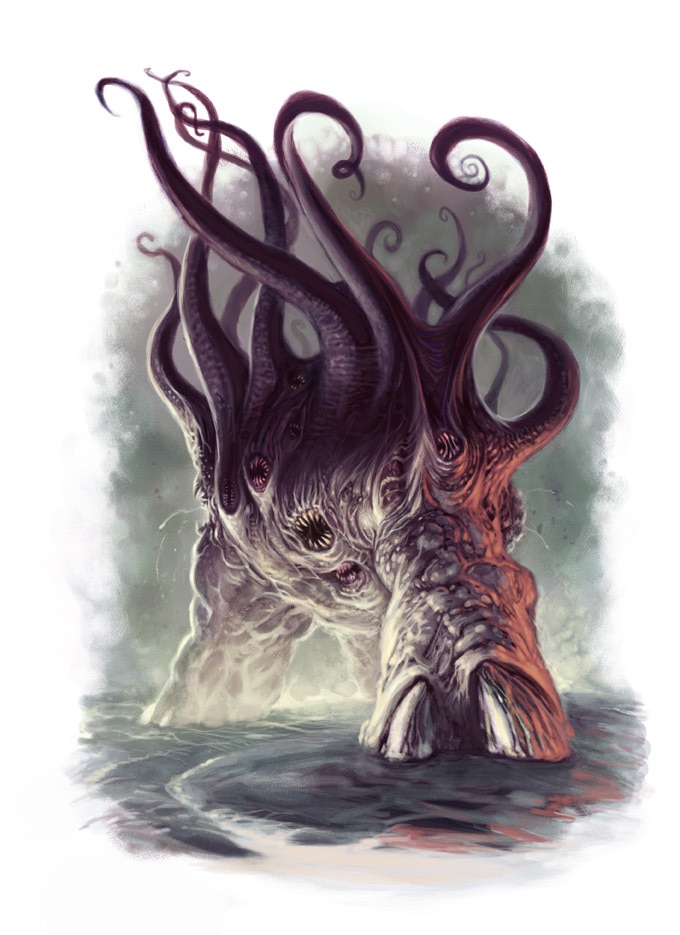 893 points
Attribute Modifiers: ST+26 [182], DX+3 [60], HT+4 [40].
Advantages: 360° Vision [25]; Affliction 1 (Follow-Up to Bite, +0%; Attribute Penalty, ST-1, +10%; Cumulative, +400%; Extended Duration, Permanent, +150%; Low Signature, +10%) [57]; Ambidexterity; Claws (Hooves) [3]; Combat Reflexes [15]; Constriction Attack (Tentacle Grapple) [15]; Damage Resistance 50 (Limited, All Energy Attacks, -20%; Can't Wear Armor, -40%) [100]; Damage Resistance 20 (Limited, Corrosion, -60%; Can't Wear Armor, -40%) [20]; Damage Resistance 50 (Limited, Explosive Blasts, -60%; Can't Wear Armor, -40%) [50]; Doesn't Breathe [20]; Doesn't Sleep [20]; Double-Jointed [15]; Energy Reserve 4 [12]; Extra Arms 2 (Extra-Flexible, +50%; Long, +2 SM, +200%) [70]; Extra-Flexible Long Arms [25]; Extra Legs [5]; Extra Mouths 3 [15]; Hard to Kill 5 [10];Hard to Subdue 3 [6]; High Pain Threshold [10]; Increased Perception 2 [10]; Increased Will 4 [20]; Indomitable [15]; Infravision [10]; Injury Tolerance (Homogeneous) [40]; No Blood [5]; Reduced Consumption 4 (Cast-Iron Stomach) [8]; Regrowth [40]; Unaging [15]; Unfazeable [15].
Disadvantages: Appearance (Monstrous) [-20]; Bad Smell [-10]; Bestial [-15]; Bloodlust [-10]; Callous [-5]; Cannot Speak [-15], Gluttony [-5]; No Fine Manipulators [-30]; Reduced Basic Speed 3 [-15]; Sadism [-15]; Wealth (Dead Broke) [-25].
Quirks: Limited Camouflage (Woodland) [1]; Fright Check is -5 [0]; SM+3 [0].
Skills: Brawling (E) DX [1], Camouflage (Woodland) (E) IQ [1], Stealth (A) DX [2]. Almost all individuals know IQ/2 spells.
Height: 20 feet
ST 36 HP 36
DX 13 Will 14
IQ 10 Per 12
HT 13 FP 13 ER 4
Size +3
DR 0/20/50
Dodge 9
Basic Lift 259
Basic Speed 5.5
Basic Move (ground) 5
Thrust 4d-1
Swing 7d+1 (I'm using the progression endorsed by Kromm)
For those unfamiliar with the critter, according to CoC canon a Dark Young's body is a mass of tentacle-like forms that nonetheless form a body with a definite shape. They have 3 hoofed legs and (usually) four tentacle-like grasping appendages coalesced out of the smaller tentacles. The body has several mouths and scores of eyes all over it. They are immune to poisons, corrosives, fire, electricity, and explosions, and generally take minimal damage from gunfire. Also note that these creatures are basically rebranded shoggoths, disguising themselves as trees. (source: Robert Bloch's story "A Notebook Found in a Deserted House".)
Flying Polyp
893 points
Attribute Modifiers: ST+26 [182], DX+3 [60], HT+4 [40].
Advantages: 360° Vision [25]; Affliction 1 (Follow-Up to Bite, +0%; Attribute Penalty, ST-1, +10%; Cumulative, +400%; Extended Duration, Permanent, +150%; Low Signature, +10%) [57]; Ambidexterity; Claws (Hooves) [3]; Combat Reflexes [15]; Constriction Attack (Tentacle Grapple) [15]; Damage Resistance 50 (Limited, All Energy Attacks, -20%; Can't Wear Armor, -40%) [100]; Damage Resistance 20 (Limited, Corrosion, -60%; Can't Wear Armor, -40%) [20]; Damage Resistance 50 (Limited, Explosive Blasts, -60%; Can't Wear Armor, -40%) [50]; Doesn't Breathe [20]; Doesn't Sleep [20]; Double-Jointed [15]; Energy Reserve 4 [12]; Extra Arms 2 (Extra-Flexible, +50%; Long, +2 SM, +200%) [70]; Extra-Flexible Long Arms [25]; Extra Legs [5]; Extra Mouths 3 [15]; Hard to Kill 5 [10];Hard to Subdue 3 [6]; High Pain Threshold [10]; Increased Perception 2 [10]; Increased Will 4 [20]; Indomitable [15]; Infravision [10]; Injury Tolerance (Homogeneous) [40]; No Blood [5]; Reduced Consumption 4 (Cast-Iron Stomach) [8]; Regrowth [40]; Unaging [15]; Unfazeable [15].
Disadvantages: Appearance (Monstrous) [-20]; Bad Smell [-10]; Bestial [-15]; Bloodlust [-10]; Callous [-5]; Cannot Speak [-15], Gluttony [-5]; No Fine Manipulators [-30]; Reduced Basic Speed 3 [-15]; Sadism [-15]; Wealth (Dead Broke) [-25].
Quirks: Limited Camouflage (Woodland) [1]; Fright Check is -5 [0]; SM+3 [0].
Skills: Brawling (E) DX [1], Camouflage (Woodland) (E) IQ [1], Stealth (A) DX [2]. Almost all individuals know IQ/2 spells.
Height: 20 feet
ST 36 HP 36
DX 13 Will 14
IQ 10 Per 12
HT 13 FP 13 ER 4
Size +3
DR 0/20/50
Dodge 9
Basic Lift 259
Basic Speed 5.5
Basic Move (ground) 5
Thrust 4d-1
Swing 7d+1 (I'm using the progression endorsed by Kromm)
For those unfamiliar with the critter, according to CoC canon a Dark Young's body is a mass of tentacle-like forms that nonetheless form a body with a definite shape. They have 3 hoofed legs and (usually) four tentacle-like grasping appendages coalesced out of the smaller tentacles. The body has several mouths and scores of eyes all over it. They are immune to poisons, corrosives, fire, electricity, and explosions, and generally take minimal damage from gunfire. Also note that these creatures are basically rebranded shoggoths, disguising themselves as trees. (source: Robert Bloch's story "A Notebook Found in a Deserted House".)
Flying Polyp
Formless Spawn (possibly a form of mutated Reek?)
Hound of Tindalos (possibly some kind of demon summoned by a wizard?)
ST 16; DX 10; IQ 15; HT 20. Will 18; Per 14; HP 24; Speed 7.5; Dodge 11; Move 10 SM 0; 200 lbs. Traits: Affliction 1 - Soul Drain (Follow-Up – Tongue, Attribute Penalty (IQ), Cumulative, special enhancement: IQ loss is permanent), Claws (Blunt, Follow-Up), Combat Reflexes, DR 4 (Tough Skin), Dark Vision, Sharp Teeth, Innate Attack – Tongue 1 imp (Melee Attack: Reach 1, Cannot Parry), Innate Attack – Ichor 1d corrosion (Cyclic (10 seconds), Follow-Up – Claws), Jumper (Time, limitations: Naked; takes 1 day of subjective time per 100,000,000 years travelled; can only emerge through a corner of 120° or less), Obsession (stalk human prey through time), Quadruped, Regeneration (Very Fast), Supernatural Durability (except magic and enchanted weapons) Skills: Brawling-15, Observation-18, Search-15, Stealth-12, Tracking-20 Weapons: Bite (1d+1 cut), Claw (1d+1 cr+1d cor), Tongue (1 imp+1 point of IQ permanent damage) Fright Check Modifier: -10 Hunting Horror (maybe…it would likely manifest through a gate or portal)
Fright Check: -4 Height: 20' wingspan, 50' long (actually the length is unknown, since no one has ever been able to find the end; it just seems to stretch indefinately up into the sky) Weight: 2+ tons Traits: No internal organs; it seems to be simply an esophogus with sensory organs attached. It seems to be mostly extradimensional. ST 30 HP 30 DX 12 Will 15 IQ 11 Per 13 HT 11 FP 11 ER 10 Size +2 DR: 8 Dodge 8 Basic Lift 180 Basic Speed 5.75 Basic Move (ground) 4 Basic Move (flight) 7 Thrust 3d Swing 5d+2 Vermiform Reduced Move (ground) 1 Moon-Beast
Reanimated of K’n-Yan (some mad necromancer’s minions)
Shantak
Wamp
ST: 23* HP: 23 Speed: 5
DX: 9 Will: 10 Move: 8
IQ: 4 Per: 8
HT: 11 FP: 11 SM: +1, 1,000-2,500 lbs.
Dodge: 8 Parry: 7(4) DR: 1 (Tough Skin)
Horns (9): 2d+2 imp; Reach C
Trample (9): 2d+3 cr
Source: GURPS Bestiary 3e
*ST range 20-27 depending on weight
Targa
Three headed reptilian beast, very vicious, very dangerous, kind of like a hydra. Flightless, it looks like a stocky lizard with three heads on short, snaky necks. Its brain is at the base of the necks, much like a puppeteer’s, protected by a thick skull/pelvis. Its four legs have strong, sharp claws, although they are used more for digging nests/warrens than for fighting. It uses its toothy heads for that. Adults can get up to about 20’ in length, standing 6’ high at the shoulder (the heads can reach to about 10’). Color is a mottled earthy brown/grey. ST-2 cutting (7d-1 cutting, x3, full coordination), ST bashing (7d-1 cr, tail swipe). Inhabits drier areas, and makes its warrens in sandstone outcroppings. A southern creature, usually only encountered south of the Klernaktha territories.
ST 60, DX 15, HT 12/50, IQ 5, DR6 MV 12 Dodge 10 (12 when sped up).
Like Grendels, they have a superoxygenator for their bloodstream that gives them Great Haste (Altered Time Rate 1) for up to 20 turns. When it is active, they breathe out steam; this has resulted in prevalent rumors that it is a fire-breathing beast.
Trihorn Gazelle like animal, with two large horns arcing back from its head, and a single short horn sticking up between them. 4’ high at the shoulder, they tend to prefer wide open spaces like plains, although varieties also live in scrub lands. Same stats as a a gazelle. Dragon Dragons come in several types. Most breathe fire (except the faerie dragons who don’t have breath weapons, and the serpentine dragons that have poison instead). Faerie Dragons Smallest of the dragons, they have a wingspan of about three feet, and a similar length. They are slender, and about as smart as a dog. They can be trained, and are valued as pets. They look very much like the illustration of the Butterfly-Dragon in the Dreamlands Bestiary: Sargasso seahorse like with butterfly wings. They can exude psychotropic chemicals when threatened; these cause temporary loss of senses (sight, hearing, taste/smell, touch, proprionic, balance) for 1d hours. 3d6: 3-6 one sense; 7-9 two senses; 10-12 three senses, 13-15 four senses, 16-18 five senses. HT roll to resist (for each sense affected), the amount the roll is made by reduces the time by an hour. Even on a save, the sensory information is a bit scrambled for a few seconds, allowing the dragon to escape. ST 10, DX 14, IQ 6, HT 12, HP 10, Move/Dodge 12/7, DR 1, Damage 1d-1 cut, Size 1 hex, Weight 60 lbs. Great Drake
The least common are the great drakes, hexapods with four legs, two wings, and a tail. They are also the smartest of the dragons; they tend to be smarter than most humans. At least +2 IQ, Magery (up to 3 levels). Breath weapon is flame that is magically generated (so it acts as the more “traditional” breath weapon, not like the wyvern’s sputum). Some know humanoid languages. It is traditional to address them as “Var” as an honorific, much like “m’lord”. They expect that out of “lesser beings” and ephemerals. They are even longer lived than Elves, and consider Elves “ephemeral”. They are immortal, as far as anyone knows (Elves recount stories about Dragons mentioning times before the Elves “walked upright”). Kler’naktha think that the Dragons are messengers of the gods.
Drakes are intelligent, and have the ability – though not always the desire – to speak human languages. Dragons are motivated by pride and greed – both for food and for treasure. They breed in mountain fastnesses. A newly hatched drake is about the size of a man. He immediately sets out to find his own territory. Most perish at the hands of men, monsters, or other dragons. A few survive. Dragons are never common. It takes a large territory to provide enough fresh meat for such a beast; a full-grown drake can eat two cows a week. Even a hatchling eats as much as a man! However, see Rumors, below. Dragons are born knowing their own language. Any drake but a hatchling will probably know other languages as well. Dragons continue to get larger, older, and wiser throughout their lifetimes. They grow very slowly, but never get weak or senile. They are said to be immortal, dying only as a result of violence.
See FB 83-84 for stats. Serpentine Dragon (Wyrm) The next most common is the serpentine dragon, which is basically a snake with wings. Also called Ketziils Kwaatili (from Mekiitagi for “flying stranglers”), they will often attack by trying to constrict the target’s neck. The larger ones (30’ wingspan) will just grab you, fly off with you, and drop you. They tend to be less smart than humans (-1 IQ). Their stats are otherwise like the Great Drakes, above.
Wyvern The most common is the wyvern-type dragon, two wings, two feet, much like Skyrim’s or Game of Thrones dragons, and can have up to a 40’ wingspan. They tend to like mountainous areas, nesting in caves. Breath weapon is a napalm-like chemical that is generated in organs along the jawline, and spit out at targets; it ignites in air. It is not a stream; it is a glob of sputum.
ST: 20-30 DX: 14 IQ: 6 HT: 14 HP 24-30 Move/Dodge: 20/10 DR: 3 Damage: * Reach: C-2 Size: 10 hexes Wt: 800-1,000 lbs. Habitats: M, D, F
They are solitary diurnal creatures found in remote wildernesses, and seldom come close to civilized lands (they tend to get hunted, fast!). A wyvern will strike with its tail (2-hex reach) from above, then land to carry off its prey; it can carry up to Medium encumbrance. Its talons are used for grasping its prey, doing 1d-1 cutting damage in close combat. On the ground, its Speed is reduced to 3, and Dodge to 7.
Hydrae Serpent-like creature with six to nine heads, each linked to each other via a mindshare. They range in size from a foot long (Dwarf Hydra, highly poisonous) to twenty feet long (Giant Hydra) and most varieties are poisonous. All are carnivorous and will eat carrion. There are over a dozen known varieties, and sages think that there are three times that that haven’t been catalogued. They are usually quite territorial and aggressive. They have fangs and ripping/tearing/chewing teeth and chew their food (biting off pieces with all but one head, which acts as a lookout they do not swallow it whole like a snake. They use clefts in rocks, caves, hollow logs, and similar places for lairs. They also will modify a location to be more suitable and safer for them, using their many heads like hands as manipulators. Their standard tactics involve ambush from camouflage (most species have natural coloration that allows them to do this at skill level 15-18), and attacking with several (but never all) its heads at once. One or more heads usually serve as lookout and reserves. They are quite clever, and some species can live quite a long time (like many reptiles). It is known for them to acquire learned behaviors; although no one knows if they can teach each other (it is considered very unlikely, however, since they tend to be rather solitary creatures with little care given to offspring). Bush Hydra
Living in scrub lands, it is camoed, has leaf-like protrusions, and looks like a plant. It is an ambush hunter. Follow-up poison with a 1 minute delay and a HT roll to resist. Inflicts 1d+1 toxic damage, repeating at one hour intervals for 8 cycles. A victim who loses 1/3, 1/2, or 2/3 HP has -2, -3, or -4 DX, respectively. ST 7-10, DX 13, IQ 5, HT 12/12-16. MV/Dodge 10/6, DR 2, Damage 1d-3 to 1d-2 per bite plus poison, Reach C, Size: 4-7 feet long, (1 Hex), Weight 12-30 lbs. Cave Hydra
Lives in caves. Its flesh is considered a delicacy by the Dwarves, but no one else shares their views. Follow-up poison with a 1 minute delay and a HT roll to resist. Inflicts 1d+2 toxic damage, repeating at one hour intervals for 6 cycles. A victim who loses 1/3, 1/2, or 2/3 HP has -1, -2, or -3 DX, respectively. ST 9-14, DX 13, IQ 6, HT 15/15-20, MV/Dodge 7/6, DR 2, Damage: 1d-2 to 1d-1 per bite, plus poison, Reach C, Size: ranges from 4 to 8 feet long (considered 1 hex), weight 20-40 lbs. Albino, and visually blind to boot, but they have IR vision. Common Forest Hydra
Colored a mottled green and brown, with bits of black, the Forest Hydra is probably the most common hydra in the western portion of the Realm. They generally won’t attack humans, although children are at risk. Follow-up poison with a 1 minute delay and a HT roll to resist. Inflicts 1d+2 toxic damage, repeating at one hour intervals for 6 cycles. A victim who loses 1/3, 1/2, or 2/3 HP has -1, -2, or -3 DX, respectively. They inhabit forests, and do not climb trees as a habit. ST 9-14, DX 13, IQ 6, HT 15/15-20, MV/Dodge 7/6, DR 2, Damage: 1d-2 to 1d-1 per bite, plus poison, Reach C, Size: ranges from 4 to 8 feet long (considered 1 hex), weight 10-30 lbs. Common Jungle Hydra
Follow-up poison with a 1 minute delay and a HT roll to resist. Inflicts 1d+2 toxic damage, repeating at half hour intervals for 6 cycles. A victim who loses 1/3, 1/2, or 2/3 HP has -1, -2, or -3 DX, respectively. They inhabit jungles, are arboreal, and have the annoying habit of dropping upon victims and biting repeatedly. ST 9-14, DX 13, IQ 6, HT 15/15-20, MV/Dodge 7/6, DR 2, Damage: 1d-2 to 1d-1 per bite, plus poison, Reach C, Size: ranges from 4 to 8 feet long (considered 1 hex), weight 10-40 lbs. Desert Hydra
This type is a sandy brown in color, with other earth tones (primarily browns and greys) mixed in. Follow-up poison with a 1 minute delay and a HT roll to resist. Inflicts 2d-1 toxic damage, repeating at one hour intervals for 6 cycles. A victim who loses 1/3, 1/2, or 2/3 HP has -1, -3, or -5 DX, respectively. ST 12-18, DX 13, IQ 6, HT 15/20-30, MV/Dodge 7/6, DR 3, Damage: 1d to 1d+1 per bite, plus poison, Reach 1, Size: ranges from 6 to 12 feet long (considered 2 hexes), weight 30-60 lbs. Dwarf Cave Hydra
As Dwarf Hydra, but albino with bad sight and IR vision. Dwarves consider them good eatin'. Dwarf Hydra
highly poisonous, but is generally afraid of creatures bigger than twice its size. Follow-up poison with a 1 minute delay and a HT-3 to resist. Inflicts 2d toxic damage, repeating at half hour intervals for 6 cycles. A victim who loses 1/3, 1/2, or 2/3 HP has -2, -4, or -6 DX, respectively. They inhabit forests, both on the forest floor (hiding in ground cover) and arboreally. ST 3-5, DX 13, IQ 4, HT 15/4-8, MV/Dodge 3/6, DR 0, Damage: 1d-4 per bite, plus poison, Reach: C, Size: about a foot long, usually has eight heads, Weight: 1-2 lbs. Occasionally seen as pets (requires that the hydra be imprinted at birth with the owner, but is still really dangerous) by the brave and foolish. Make great reputation getters, though (who can forget the guy with an eight-headed, extremely poisonous snake wrapped around his shoulders). Giant Hydra

-Hydra- by Arvalis
Inhabits grasslands, this hydra is green in winter and spring, but changes color to a golden color in summer and fall, to better match the grass. Like it’s close relative the spotted hydra, this one is an active hunter, and is very quick. Follow-up poison with a 1 minute delay and a HT roll to resist. Inflicts 2d toxic damage, repeating at half hour intervals for 4 cycles. A victim who loses 1/3, 1/2, or 2/3 HP has -2, -4, or -6 DX, respectively. ST 9-12, DX 14, IQ 6, HT 14/14-18. MV/Dodge 10/6, DR 2, Damage 1d-2 to 1d-1 per bite plus poison, Reach C, Size: 5-9 feet long, (1 Hex), Weight 12-35 lbs. River Hydra
Inhabiting waterways, they are a light to dark green mottled with brown in color. Aquatic, almost exclusively, although they have some ability to move on land. Follow-up poison with a 1 minute delay and a HT roll to resist. Inflicts 2d-1 toxic damage, repeating at one hour intervals for 6 cycles. A victim who loses 1/3, 1/2, or 2/3 HP has -1, -2, or -4 DX, respectively. ST 12-18, DX 13, IQ 6, HT 15/20-30, MV/Dodge 7 (12 swimming)/6, DR 2, Damage: 1d to 1d+1 per bite, plus poison, Reach 1, Size: ranges from 10 to 16 feet long (considered 2 hexes), weight 60-120 lbs. Rock Hydra
Inhabits just about any rocky terrain in any climate, ranging from deserts to badlands to mountains. Looks like a lumpy grey rock unless moving, in which case it looks like a moving lumpy grey rock—with teeth. Follow-up poison with a 1 minute delay and a HT-2 roll to resist. Inflicts 1d+2 toxic damage, repeating at one hour intervals for 6 cycles. A victim who loses 1/3, 1/2, or 2/3 HP has -1, -2, or -3 DX, respectively. ST 15-22, DX 13, IQ 6, HT 15/25-30, MV/Dodge 6/6, DR 5, Damage: 1d to 1d+1 per bite, plus poison, Reach 2, Size: ranges from 10 to 15 feet long (considered 4 hexes), weight 40-90 lbs. It has excellent camouflage, and is very hard to spot before it’s too late. Sand Hydra
Inhabiting sandy deserts, this hydra hides just beneath the sand, lying in wait for some animal to get too close. It is a nearly uniform sandy brownish grey in color, with occasional darker scales. Follow-up poison with a 1 minute delay and a HT-2 roll to resist. Inflicts 2d-1 toxic damage, repeating at half hour intervals for 6 cycles. A victim who loses 1/3, 1/2, or 2/3 HP has -1, -3, or -5 DX, respectively. ST 5-7, DX 13, IQ 4, HT 15/6-10, MV/Dodge 6/6, DR 1, Damage: 1d-3 per bite, plus poison, Reach: C, Size: about 3’ long, Weight: 3-5 lbs. They are basically invisible until they strike (since they are hidden until then). Scyllic Hydra (Giant Sea Hydra)
Mythical Hydra species that inhabits the oceans. Reputedly immense, its length is unknown since one has never been measured (or seen by qualified observers). The only things “known” about them are: they can eat a man in a single gulp; they are bigger than ships; they can crush ships like a beer can. It is not known if they are poisonous, as all of the stories about them never mention anyone surviving being bitten (besides, what good would poison do for something that swallows something as soon as it bites it?). Estimated stats: ST 400+, DX 13, IQ 7+ (stories indicate a rather high problem solving ability, but this is unlikely), HT 15/100+, MV/Dodge 12 swimming/6 (although it is usually so big that it probably doesn’t bother), DR 15, Damage: enough.
Spotted Hydra
Inhabiting open areas (plains, fields, etc.), this hydra is an active hunter. Its coloration is primarily brown, with greenish and black spots mottling its scales. It is very quick. Follow-up poison with a 1 minute delay and a HT-1 roll to resist. Inflicts 2d toxic damage, repeating at half hour intervals for 4 cycles. A victim who loses 1/3, 1/2, or 2/3 HP has -2, -4, or -6 DX, respectively. ST 9-14, DX 13, IQ 6, HT 15/15-20, MV/Dodge 10/6, DR 2, Damage: 1d-2 to 1d-1 per bite, plus poison, Reach C, Size: ranges from 4 to 8 feet long (considered 1 hex), weight 10-30 lbs.
Swamp Hydra
Inhabiting swamps, they are a light to dark green mottled with black and brown in color. Prefer moist environments, and are at home on land or in water (and actually prefer water). Follow-up poison with a 1 minute delay and a HT roll to resist. Inflicts 2d-1 toxic damage, repeating at one hour intervals for 6 cycles. A victim who loses 1/3, 1/2, or 2/3 HP has -1, -2, or -4 DX, respectively. ST 12-18, DX 13, IQ 6, HT 15/20-30, MV/Dodge 7 (12 swimming)/6, DR 2, Damage: 1d to 1d+1 per bite, plus poison, Reach 1, Size: ranges from 6 to 12 feet long (considered 2 hexes), weight 30-60 lbs. Troll-kin Hydra (regenerating hydra)
Mythic hydra species that, like Trolls, regenerates. According to legend, when a head is cut off, two grow in its place. It seems to conform to a large Forest Hydra in looks and habits, but is much larger. Type A poison (HT -2), 1d+2 damage. ST 15-22, DX 13, IQ 6, HT 15/25-30, MV/Dodge 6/6, DR 5, Damage: 1d to 1d+1 per bite, plus poison, Reach 2, Size: ranges from 10 to 15 feet long (considered 4 hexes), weight 40-90 lbs. Stun Lizard
Marsh/jungle dwelling crocodilians with an enlarged brain case, in which is an organ that can cause a stunning effect on prey. This is similar (in function) to the sonic stunning effect that cetaceans can accomplish, although in this case it’s arcane/magical, rather than sonic. Stats are the same as a Nile Crocodile, although the snout is more rounded (like an alligator). The stunning effect overloads the neural system of the victim; treat as the spell “Stun” (Body Control). The effects of this is severe pain and a "whiting out" of vision. ST 20-28, DX 14, IQ 3, HT 13, HP 24-30, MV/D 8/7, DR 4, Damage 1d+2 cut, Averages 13-16 feet long, although specimens 20 feet long have been found. It's tail can strike at anyone in its back hexes. The tail does 1d damage, and can knock people over (Contest of ST). Flickerbugs (Displacer Beasts)
Body like a chitinous puma about 3' high at the shoulder. Dark in color, iridescent black. Two horny striker arms emerge from where the shoulders would be if this was feline. They do impaling damage and can attack anything within 180 degrees of forward. Reach 1. When not in use, they fold back over where shoulderblades would be. Its primary ability combines limited invisibility with simple illusion. It can project its image up to 6' away from its actual location. Facing and pose remain the same, however. Note that although it has the basic body plan of a feline, it isn't one. It has more in common with insects than placental mammals. Eyes are compound, and it has peripheral vision (not quite 360). It can see color. While visual acuity may not be as good as a cat's , it has small antennae fringing the head that detect scent for miles. They hunt in small packs of 2-4, like wolves. Tactics are similar: strike and move back to let others pack members attack. Find an opening, and attack again. Typical tactics will have one member pounce on a foe, while others attack with the strikers once foe is down. This reduces defenses and makes foe more likely to be taken out. In combat, they are pretty devastating, since trying to hit them is rather difficult, since melee is a mass of images skipping all over the place, making it very confusing. Since there are multiple flickerbugs, their projected images may overlap. The trick to finding out where they are is to see their effect on the landscape (footprints, moving foliage, etc). Or wrestle with them, once you find it, hold onto it and hope someone helps out…. ST 18, DX 13, IQ 4, HT 10, Will 10 Per 12, Hits 18 DR 3 (Chitin + toughness)
Wt 150 kg Basic Speed 6 MV 12 (14 sprinting) Dodge 10 (3+ Basic Speed+ combat ref)
Attacks: bite 1d+2 cut (chelicerae claw 1d+2 cut; Striker 1d+2 imp
Brawling-15, Wrestling-15, Stealth-15 Lunefish (CotN): Packs of aquatic monsters which sing to bring on madness in people. They are strongest during the night hours and the full moon. They prey on people, and find terrified people more tasty (likely due to higher levels of cortisol?) Found along the coasts. Sometimes they will swim up rivers, although they prefer salt water. They are also pretty common in the sewers of coastal cities. Source of mind-altering alchemical ingredients. Mazeworms (CotN): Mazes of living underground tunnels, full of noxious fumes, which have streams of acidic bile running through them. The nexus of the tunnels contains the creature’s brain. The creature can attack by using convulsions of its body, squeezing (easily done since it takes effort and bracing structures to keep the tunnels open), or by using an internal pseudopod to grapple someone, pulling them towards a mouth nearby. Circumplasm (the bile-like fluid) is a spell component for the Acid spells (those that are known and is used in several alchemical preparations, as is the flesh. First discovered by Dwarves, when they accidentally tunneled into one. It took a long time to figure out what it was, and kill it. They are rare, but common enough for the Dwarven tunneling companies to have procedures written up about them. But they aren’t just found in the mountains. They can be found just about anywhere underground. They are geobiologic organisms of immense size (See https://www.mysteryfleshpitnationalpark.com/), but can be "mined" for lucrative materials (such as amniotic ballast, which has aphrodesiac effects, among other things). Mockers (CotN): These shapeshifters can take the forms of animals of lesser intelligence than themselves. When motionless, they appear to be statues, so they are often found in cities. They hunt and eat people who have magical abilities (typically those with Magery, although Elves, with their innate “hedge magic” are targets too). When they consume their prey, they are actually feeding on the mana contained. Needlers (CotN): Alchemical humunculi things that are used by the murderous alchemist types. These balls of mummified flesh covered with stiff bone needles travel by rolling or by floating. They drink blood by extending and retracting their needles. Good adventure fodder. To create one of these horrors requires the Create Needler spell, some alchemy, and of course, at least one body. Puppeteers (CotN): Small, slimy creatures with eight legs and lumpish heads on serpentine necks. They burrow under the skin of a persons’ back and attach themselves to the nervous system. They manipulate the person by controlling his access to his memories and by clenching their muscles (causing the victims extreme pain).They are antimemetic. Slitherwens (CotN): These black land eels live in shadows, and can cling to walls and ceilings using their mucus. They eat small animals and infants. Their venom causes victims to grow what amounts to a skin tumor, which act as portals to allow the slitherwens to travel from one place to another. Roarers: Also known as the “Scourge of the Skies” by the Aarakocra, they live on the highest mountaintops, typically in caves. They are very much like pterodactyls crossed with manta rays, but with a pair of methane-powered pulse-jet pods, one in each wing at the wing root. Once ignited, they are able to fly at up to speeds of 250mph or so. They are carnivorous, and need to eat quite a lot due to their fuel requirements, although their innate magic helps with this. They also have heat/fire resistance (in their engines) and a magical organ that has levitational properties that effectively reduces their weight without having to have hollow bones. They have a pair of double jointed legs that have a long claw (much like a velociraptor) that they use to stab and grab prey as they fly past. They will often turn off their engines and glide into an attack as a way to sneak up on prey. Aarakocra are a favorite prey animal; the best defense is to hopefully see them before they see you, and dive towards the ground, losing yourself in the ground clutter. Fortunately, they are very rare, and require couple of thousand square miles of territory. (Unabashedly stolen from the buzzbombs of the Gaea Trilogy and the Skewers of Expedition.). 10m wingspan, 400lbs, ST 18, DX 13, IQ 7, HT 12, HP 24. Callous, No Fine Manipulators, DR 3 (tough skin), another 4 DR (heat/fire only). Here is a sound file for what these things sound like when flying. Firesaurs

Arcticodactylus by Joschua Knüppe
Adult: 8 lbs.
ST 4; DX 12; IQ 1; HT 10
HP 4; FP 10; Will 10; Per 10
Speed 5.5; Move G5-W1; Dodge 8
DR 2 (Tough skin)
Attacks: Bite 1d-5 cut with Poison
Physical Traits: Dark Vision; High Pain Threshold; Lifting ST +2; Striking ST +1 (Bite only)
Skills: Brawling-12 •Poison (F): Affliction 2 (HT-1; Extended Duration, x30; Follow-Up, bite; Moderate Pain; Secondary, Paralysis) Description: Giant Centipedes are about 2 feet long and can be found in both subterranean and dark, damp forest environments, mainly in the jungles. They attack anything that they think might be food. Their bite won’t penetrate armor but if they bite flesh, they will inject a painful venom that can cause paralysis using their toxicognaths. See https://www.youtube.com/watch?v=aMYxRIByCQE for some squicky but cool stuff on centipedes. Giant Cave Centipede Vermiform*, Wild Animal
ST: 13* HP: 13 Speed: 6.5
DX: 14 Will: 9 Move: 6
IQ: 2 Per: 10
HT: 12 FP: 12 SM: +4*
100-500 lbs.
Dodge: 9 Parry: — DR: 0
Bite (16): 2d imp* with Venom; Reach C
•Venom (F): Type F 1d
Source: GURPS Bestiary 3e
*ST range 9-16; Effectively vermiform; Striking ST range 20-22; SM range +1 to +4
Very large, very dangerous; they can grow up to 25 feet long. They live deep in cavern systems, typically hunting cavern critters, or, more often than anyone would like, dwarves. Giant Fire Beetle SM -3 Insect, Wild Animal
ST 6; DX 10; IQ 1; HT 10
HP 6; FP 10; Will 10; Per 10
Speed 5; Move G5-W1; Dodge 8
DR 2 (Flexible [carapace])
Attacks: Bite 1d-1 cut
Physical Traits: Dark Vision; High Pain Threshold; Lifting ST +4; Striking ST +7 (Bite only)
Quirks: Glowing glands behind eyes (Incompetence, Stealth)
Skills: Brawling-10
Description: Giant Fire Beetles are around 2 feet in length and are known for having a very powerful bite for their size. They will attack anything that they identify as food (sleeping adventurers qualify), although their glowing glands will often alert their prey. The glands are prized by wizards and alchemists, plus they are useful as they will continue to provide light (-5 vision rolls) for several days after removal. Insect Meta-Trait: Doesn’t Breathe (Oxygen Absorption), Extra Legs (total 6; cannot kick), High Pain Threshold, Horizontal, Injury Tolerance (No Vitals), No Fine Manipulators. Ogre (Template) SM +1
ST +7 [63]; DX -1 [-20]; IQ -3 [-60]; HT +2 [20]
HP +2 [4]; Per +3 [15]
DR 3 (Tough Skin, -40%) [9]
Physical Traits: Dark Vision [25]; Enhanced Move 1/2 (Ground) [10]
Social Traits: Bad Smell [-10]
Quirks: Uncongenial
Total Cost: 55 points Ogre Warrior, Advanced SM +1
ST 17; DX 9; IQ 7; HT 12
HP 19; FP 12; Will 7; Per 10
Speed 5.25; Move 5; Dodge 10
DR 3 (Tough Skin)
Attacks: thr 1d+2; sw 3d-1
Languages: Ogre (Gruntish)
Mental Traits: TL3
Templates: Ogre
Skills: Axe/Mace-14; Brawling-11; Shield-12; Wrestling-11
Total Cost: 95 points Ogre Warrior, Primitive SM +1
ST 17; DX 9; IQ 7; HT 12
HP 19; FP 12; Will 7; Per 10
Speed 5.25; Move 5; Dodge 8
DR 3 (Tough Skin)
Attacks: thr 1d+2; sw 3d-1
Languages: Ogre (Gruntish)
Mental Traits: TL 1
Templates: Ogre
Skills: Axe/Mace-14; Brawling-12; Wrestling-12
Total Cost: 85 points Reek
ST: – DX: – IQ: – HT: 5-20
Move/Dodge: 1/0 DR: 0 Damage: * Reach: C
Size: 1 hex Weight: 20-60 lbs. Origin: F Habitats: Sub, F, J
A reek is a nasty, slimy creature found in caverns, deep woods and jungles. It looks like a huge decaying lump of brown jelly, though there are some slight color variations. It lives by covering and dissolving organic matter, both living and dead. Reeks hate sunlight and are active any time that it isn’t too bright. They are usually solitary, though they can occasionally be found two at a time, as their mating season is year-round. Like worms, reeks are hermaphroditic. Reeks attack by contact, doing one hit of damage per turn. No DX roll is required – if they can reach the foe’s hex, they hit. Armor protects for a number of turns equal to its DR. They ignore impaling weapons, but cuts and blows do normal damage, as does fire. Reeks cannot fall down, be stunned, lose their balance, etc., and there is only the general body to hit. Reeks do not exactly lose consciousness, but become unable to move at 0 HT, and are destroyed when they are at -3×HT (there is no roll at -HT, etc.).
Most reeks cannot climb and aren’t fast enough to catch prey. They are most dangerous when unseen – IQ-2 roll to avoid stepping on one in your path! Anyone stepping into a reek can pull free only by making a roll against ST; otherwise, the creature must be killed to get it off. All rules about striking into close combat apply.
Some reeks can climb, and use trees or cave walls as platforms to drop from above onto unwary travelers.
Occasional reeks reach gigantic proportions. In general, multiply weight, hit points and damage by the number of hexes of size.
Reeks are not affected by Control Animal spells. Reeks, Magical
ST: – DX: – IQ: – HT: 5-20
Move/Dodge: 1/0 PD/DR: 0/0 Damage: * Reach: C
Size: 1 hex Weight: 20-60 lbs. Origin: F Habitats: Sub, F, J
Certain types of reeks have magical abilities powered by mana stored in their nuclei. These can cast spells at skill level 15, and store up to 15 “fatigue” points of mana at a time, recharging expended points at a rate of 1 per hour. Unless otherwise specified, treat these as normal reeks for combat purposes.
Other types of magic reeks can be created, ranging from the deadly to the silly.
Confusion Reeks cast a modified version of the Mystic Mist spell (p. 107), over a 3-hex radius area. The spell area must include the hex the reek is in, though it is not necessarily centered on it. Unlike the actual Mystic Mist spell, no Fright Check is needed. Instead, victims must make an IQ + Magic Resistance roll each turn or suffer disorientation. Disoriented victims may not choose the direction they wish to go in – roll randomly for each hex of movement. People with Absolute Direction are immune, and those who are not confused may lead others. Only the confusion reek is considered “native” to the Mist, and it can cast the spell in 2 seconds.
Decay Reeks can cast both Seek Food (p. M42) and Decay spells (p. 106). They will decay a party’s supplies, and eat the rotting remains when it is abandoned. (Seek Food senses the nearest source of food – use the Long Range Distance modifiers on p. B151.)
Glue Reeks leave a trail of magically Glued hexes wherever they go. Treat each hex that the reek spends 5 seconds in as being under the Glue spell (p. 106) for one minute. It cannot maintain the spell. Thus, a glue reek traveling through a cavern at 1 hex every 5 seconds will leave a trail of 12 glued hexes behind it, expiring at different times. They rarely travel in straight lines, and the hexes cannot be distinguished from those around them except with the Mage Sight spell (p. M49). Glue reeks ignore the limit of 15 fatigue that other reeks have.
A glue reek can sense anything caught in one of its glued hexes, like a spider sensing victims in its web. It will speed up to the normal reek move of 1 directly toward a victim – it is immune to its own spell, of course.
Daze Reeks cast the Mental Stun spell (p. 107). Anyone successfully resisting it is immune to that particular reek forever. A victim who fails his resistance roll and is attacked by the reek rolls to recover from the mental stun at +1 per hit taken from the reek.
Pleasure Reeks cast the Emotion Control spell (p. M59), instilling love and joy in their prey – roleplay it! Anyone failing the resistance roll is immensely attracted to the reek, and will even sit by it and take it into his lap. The immobile victim will continue to be lulled even as the reek consumes him, and will only be aroused to defend the reek!
Rust Reeks have the ability to corrode iron and steel. Their mana organs cast the Ruin spell (p. M51), but drastically speeded up in a manner mages have not been able to duplicate. Unlike other reeks, they are often found in groups of 3 to 10. These reeks digest oxidized metal rather than organic material. Rust reeks often live near other types of reeks, since they are not in competition for food.
For every 3 seconds a rust reek is attached to metal armor, the DR of the armor is permanently reduced by 1. When DR 0 is reached, the armor falls apart. (Chainmail doesn’t fall apart until the DR for swing damage reaches 0.) Note that only one piece of any armor will be attacked by any one rust reek – but if the breastplate or back piece falls apart, the whole torso is exposed! It would take 1 to 6 minutes to strap the good half of torso armor back on. Three seconds on a metal weapon will reduce its quality one level (very fine to fine to good to cheap to broken – see p. B74). The same is true for three successful hits on a rust reek by a metal weapon. For metal items such as buckles, pans, etc., 3-second intervals are recommended for determining deterioration, but the GM’s ruling is final. Some Rust Reeks even have the power to corrode noble metals like gold and silver, but these are rare!
Seeker Reeks cast a modified Seeker spell (p. B163), which works on humans as well as animals, with no penalty for strangers as subjects. They are otherwise normal reeks, and merely have the ability to seek out the nearest animal or human life form larger than a mouse. (This ability may be possessed by any of the other reeks, however!)
Stun Reeks cast the Stun spell (p. 107). Anyone successfully resisting it is immune to that particular reek forever. A victim who fails his resistance roll and is attacked by the reek rolls to recover from the stun at +1 per hit taken from the reek.
Sucking Reeks cast the Body of Air spell (p. 105) on their victims. Anyone that comes within 2 yards of the reek is attacked with the spell – it is resisted by HT. If the victim is successfully turned to air, the reek begins to “inhale” the subject into a digestive vacuole. It uses a proboscis-like appendage for this purpose (-10 to hit the proboscis). It can draw the victim towards it 1 yard per turn. If the victim makes a ST roll, the reek isn’t able to draw him towards it that turn. (Making the ST roll by 5 or more allows the PC to move away 1 yard). Once inside the vacuole, the PC is slowly returned to his physical shape, just enough for the reek to digest each second (1 hit). Killing the reek instantly breaks the spell, but if there is a victim partially inside, he automatically takes 1 point of damage from the attack. Armor does not protect from this type of reek.
Trip Reeks cast the Tanglefoot spell (p. 107). Anyone who comes within 2 yards of a trip reek is attacked by the spell – it is resisted by DX. The reek then moves towards the victim and attempts to dissolve him, as a normal reek. If using the advanced Changing Position in Armor rules (p. B103), this can be very deadly to someone in plate mail – especially if there are any rust reeks around!
Teleporting Fire-Breathing Enslaving Utter-Dome Reek is an example of taking things a little too far . . . Scorpion, Cat-Sized SM -3 (Reach C) Insect, Wild Animal
ST 7; DX 12; IQ 4; HT 12
HP 7; FP 12; Will 11; Per 12
Speed 6; Move 4; Dodge 9
DR 1
Attacks: Tail 1d-2 imp with Poison (either type Claws 1d-3 cut
Physical Traits: Striker (Tail; Limited Arc, forward)
Skills: Brawling-12; Stealth-12
•Poison Type 1 (F): Fatigue Attack 1 FP (Cyclic, 1 hour, 1 cycle; Follow-Up, tail; Resist HT+2 Affliction 1 (HT; Follow-Up, tail; Stun)
•Poison Type 2 (F): Toxic Attack 1 HP (Cyclic, 1 hour, 1 cycle; Follow-Up, tail; Resist HT-2 Affliction 1 (HT; Follow-Up, tail; Moderate Pain)
Description: Scorpions attack when they are on the hunt and feel that they have the advantage; otherwise, they are more prone to run away or stand still (if unseen). Any scorpion that suffers a major injury or drops to 1/2 HP will attempt to flee if it is able to; if it’s fight or die, the scorpion will choose to fight. Insect Meta-Trait: Doesn’t Breathe (Oxygen Absorption), Extra Legs (total 6; cannot kick), High Pain Threshold, Horizontal, Injury Tolerance (No Vitals), No Fine Manipulators. Scorpion, Large SM +1 (2 hexes; Reach C/1) Insect, Wild Animal
ST 14; DX 12; IQ 4; HT 12
HP 14; FP 12; Will 11; Per 12
Speed 6; Move 6; Dodge 9
DR 4
Attacks: Tail 1d+1 imp with Poison (either type Claws 1d-1 cut
Physical Traits: Striker (Tail; Limited Arc, forward)
Skills: Brawling-12; Stealth-12
•Poison Type 1 (F): Fatigue Attack 1d-2 (Cyclic, 1 hour, 1 cycle; Follow-Up, tail; Resist HT Affliction 1 (HT; Follow-Up, tail; Stun)
•Poison Type 2 (F): Toxic Attack 1d-2 (Cyclic, 1 hour, 1 cycle; Follow-Up, tail; Resist HT-2; Symptoms at 1/3 HP, see text Affliction 3 (HT-2; Follow-Up, tail; Severe Pain) Description: Symptoms of a scorpion sting include abnormal head, eye, and neck movements; increased saliva production; sweating; and restlessness. Insect Meta-Trait: Doesn’t Breathe (Oxygen Absorption), Extra Legs (total 6; cannot kick), High Pain Threshold, Horizontal, Injury Tolerance (No Vitals), No Fine Manipulators. Spider, Large SM -2 (Reach C) Spider, Wild Animal
ST 5; DX 12; IQ 2; HT 8
HP 5; FP 8; Will 2; Per 6
Speed 5; Move 5; Dodge 8
Attacks: Fangs 1d-5 imp with Poison; Web 1; Web 2
Physical Traits: Walk on Air (Ceiling, 10 yd; Must have supports; No forward movement)
Skills: Brawling-12; Innate Attack-12; Stealth-11
•Poison (F): Toxic Attack 1d-2 (Follow-Up; Symptom, Stunned, 1/2 HP; Symptom, Paralysis, 2/3 HP)
•Web 1 (12): Binding 4 (Area Effect, 2 yd; Must have supports; Persistent; Takes Extra Time, 1 sec; Wall)
•Web 2 (12): Binding 6 (Sticky)
Spider Meta-trait: Arachnoid, Clinging, Night Vision 9, Peripheral Vision, Vibration Sense. Manticore (temperate forests, head is humanish, but not actually human)
ST: 20-25 DX: 15 IQ: 10 HT: 14/16-20
Move/Dodge: 7/7 PD/DR: 0/2
Damage: * Reach: C, 1
Size: 2 hexes Weight: 400-600 lbs. Origin: ML (Europe) Habitats: D, M, F, J
These rare monsters have sharp-toothed human heads, the bodies of lions, and the poisoned tails of scorpions. They are found only in the most remote wilderness. Manticores combine a human intelligence with a malicious nature. Though they do not use tools, they are not “animals,” and cannot be controlled by animal-control spells. They despise all other intelligent creatures, though they may cooperate if bribed or threatened.
In close combat, the manticore attacks by biting and clawing for 2d+1 cutting damage. However, it normally uses its poisoned sting instead. This has a reach of one hex in all directions from the manticore’s rear hex. To hit with the sting, the manticore must roll its DX. Any attempt to parry the sting is at -2. The sting will penetrate DR 1 or 2, but will be deflected by greater armor. It injects a venom doing 3d toxic damage; a successful HT roll reduces it to 1d. It has 6 cycles, once per hour.
A foe with an edged weapon may attempt to cut the sting off. It is -4 to be hit and has DR 2. It is severed if it takes 6 hits cutting damage or crippled if it takes 6 hits crushing damage. Impaling weapons get no damage bonus against the tail, and any excess damage is lost.
Fideal (rivers, temperate or tropical areas)
ST: 11 DX: 12 IQ: 2 HT: 14 Spd/Move/Dodge: 6.5/1/0 DR: 0/2 Damage: * Reach: C, 1 Size: 2 hexes Weight: 150 lbs. Origin: ML (Celtic) Habitat: FW
This large creature resembles a 2-hex clump of reeds. It moves very slowly, up and down rivers, never leaving the water. Nearly mindless, it entangles and drowns victims, slowly digesting the remains for days at a time. It is active at any time, and there may be many of them in a river. A Naturalist roll is necessary to tell a fideal from normal reeds, and is only allowed if the person looks closely at it.
A fideal has five levels of Magic Resistance and is totally immune to all Animal College spells. Anyone entering an adjacent hex is grappled – quick Contest of DX. On the next turn, the fideal attempts to pull the victim horizontally into its hexes and under the water – Contest of ST. If successful, it then simply holds him there until drowned – see p. B91.
To break free requires winning a Contest of ST at -2. No weapon may be drawn – there are dozens of thin but strong vinelike tendrils wrapped all around the body. Anyone attempting to cut the victim free is striking into close combat – see p. B114.
Only cutting weapons do any damage at all to a fideal. It takes 8 hits to successfully free a companion – but any damage over 4 hits in a single blow goes through the tendrils and hits the entangled victim!
From the Bestiary
Most of the basic, standard wild animals; most of the domestic animalsAlligator (pg 6)
Antelope (pg 7)
Badger (European, communal, fantasy variation)(pg 7-8)
Great Barracuda (fresh water) (pg 8)
Bats (pg 8)
Bears (temperate zones, use the stats for brown bears; sun bears in the tropics) (pg 8-9)
Diatryma (actually the Phorusrhacidae “Terror Birds”, but use the stats listed) (pg 12)
Dinohyus (some orc tribes domesticate these giant boars and use them as mounts, mostly in the southern areas of the continent) (pg 13)
Giant Dragonfly (Tropical areas)(pg 13)
Electric Eels (freshwater)(pg 14)
Electric Ray (salt water, coastal areas and reefs) (pg 14)
Elephant (found in areas between the 20° parallels) (pg 15)
Hippopotamus (pg 18)
Jaguar (tropical areas) (pg 19)
Leopard (pg 20-21)
Monitor Lizards (pg 23)
Monkeys, both New World, and Old World (pg 23,24)
Moray Eels (salt water)
Giant Octopus (salt water)
Sabertoothed Tiger (primarily open plains or scrub land)
Sharks (salt water)
Snakes (not as common as on Earth, since the hydrae also fill that niche, and in many ways better)
Giant Spiders (pg 34)
From Fantasy Bestiary
Afanc (fresh water/aquatic, lives in lakes)Amarok (arctic, plains, tundra)
Apophis (Fresh water/aquatic, but can come up on land)
Assassin Bug, Giant (Forest, Jungle, Plains)
Athol (man-sized bat; Subterranean, Jungle)
Bloodbeast (dog-gorilla thing; Mountains, Forests, Swamps)
Bombardier Beetle, Giant (Forest, Jungle, Swamps, Plains)
Caustigus (tropical pools/swamps/marshes; it makes them acidic, so most plants around it are dead; ends up looking something like a sulphur pool, but not hot)
Chnoubis (Lion snaky thing; Deserts, Mountains, Plains)
Giant Crab (tropical waters with sandy bottoms, only very occasionally will they be found near coral reefs)
Dajoji (Goblin mythical creature that apparently shows up during times of war, attacking everybody)
Dingonek (Saber toothed crocodile/armadillo thing; Fresh Water/Aquatic)
Djun (water chameleon, found in tropical rivers, has epidermal flaps that make it look more like a wad of water plants)
Dread Stalker (invisible wolf thing; found in caves, Dwarves hate them)
Gryphon (mountains, hills)
Hercinia (glowing birds used by miners and the dwarves, their natural habitat is deep in multi canopy jungles)
The hercinia is a bird about the size of a large jay which glows with a moderate light. It is active at night, and its light is sufficient to light up a 4- hex radius quite well - no lighting pen- alty within that range. The light then fades, -3 for poor lighting up to eight yards, and -6 for up to 12 yards. Beyond that, while the bird can be seen, there is no visibility granted by the light.
It is used by miners as a light source that does not consume very much oxygen. The bird will live in captivity, but is not really tamable - it must be caged or tethered or it will fly away.
It cannot dim its light. The light gradually dies if the bird is killed, but properly prepared feathers will glow indefinitely; a Naturalist or Alchemy roll would tell how to do this. At the GM’s option, the light may be magical in nature, making the hercinia’s feathers a mana source and a likely component for a light spell.
Animal (Bird)
ST: 3 DX: 14 IQ: 5 HT: 11
HP: 3 Will: 10 Per: 12 FP: 11
Speed: 6.25 Move: A12 Weight: 1-2 lbs. SM: -1
HP: 3 Will: 10 Per: 10 FP: 11
Dodge: — Parry: — DR: 3
Sharp Beak (14): 1d-6 pi+. Reach C
Traits: Flight (Winged Wild Animal.
Features: Emanates light in 4-hex radius. See text.
Habitat: Forest. Source: GURPS Fantasy Bestiary 3e. Origin: ML (Europe)
Ikonkola (giant tropical snakes with a mana organ that reduces their weight, prized for it’s alchemical properties)
Jackalope (as the book, but the meat is edible, but not that tasty; Plains)
Jaculus (flying venomous snake; Forest, Tropical Forest)
Konoba (giant shrikes; Desert, Forest, Plains)
Kraken (ocean beastie)
Kuchedra (Poisonous reptilian critter known to poison water sources; Mountains)
Kugdlugiak (giant worm/centipede thing that lives on high mountains where the snow never melts; it is white and somewhat hard to see, despite its size)
Lau (hideously ugly ape-like creatures that steal souls. Could be mythological, but maybe not…; Jungles; Ocean/aquatic)
Leviathan (rumors only, told by sailors in taverns; rumored to swallow entire ships...surely something that size can’t be real….)
Mermex (giant ants; Desert, Plains)
Nandi Bear (Jungle Bears; Swamp, Tropical Forest)
Nashlah (temperate rivers, giant apex predator, thus very few of them)
Nightwolf (venomous invisible wolf-like creatures rumored to exist. They can't be seen at night, and don't come out in the day; also rumored to be guardians of treasures)
Pellucidus (cave crayfish; Subterranean/aquatic)
Giant Peripatus (giant slug-millipede thing that can shoot sticky fluid at victims; deep jungles, nocturnal)
Physeter (oceans, whale like fish with the magical ability to form whirlpools to trap food)
Pretkin (vampire bats that teleport; Swamp, Tropical Forest)
Giant Rat (city sewers, outskirts of villages/towns, cave systems near dwarf towns)
Quiver Beast (antimemetic dog-like beast; Desert, Plains, Subterranean)
Rogo-tumo (giant octopus things found in tropical ocean waters)
' Sag (Hybrid creature that despises water, rumored to be a demon, or a unique creature; Desert, Mountains)
Salamander (creature native to the Fire Brane)
Santer (cattle eating creature; Temperate Forest, Swamp, and cooler climes)
Sasabonsam (long limbed arboreal hairy humanoid brachiators; Jungle, Forest)
Scolopedra (large marine millipede, not actively dangerous, but don’t get close as it will attack; Salt Water)
Sea Serpent (large sea snaky thing that can attack ships)
Giant Spiders (found just about anywhere)
Striges (bloodsucking birds)
Tunguru (Immense river-bound anacondas; Fresh Water, Tropical Forest)
From Anatomical Guide of Cthulhu Mythos
Don’t know how I will use these yet, but they will likely be analogues to the Mythos creatures, or similar to them, instead of actually being them. ByakheeST 18; DX 14; IQ 8; HT 10. Will 10; Per 10; HP 18; Speed 6; Dodge 9; Move 6 SM +2; 400 lbs. Traits: Claws (Talons), Doesn’t Breathe, DR 2, Extra Attack (claw), Flight (Winged, Space Flight, Move 20), No Fine Manipulators, Temperature Tolerance 30, Vacuum Support, Vampiric Bite (limitation: does not restore HP) Skills: Brawling-12 Weapons: Claws (1d+2 imp each), Bite (1d+1 cut+1 HP blood loss/round) Fright Check Modifier: -3 Dark Young

Dark Young by Scott Purdy
Formless Spawn (possibly a form of mutated Reek?)
Hound of Tindalos (possibly some kind of demon summoned by a wizard?)
ST 16; DX 10; IQ 15; HT 20. Will 18; Per 14; HP 24; Speed 7.5; Dodge 11; Move 10 SM 0; 200 lbs. Traits: Affliction 1 - Soul Drain (Follow-Up – Tongue, Attribute Penalty (IQ), Cumulative, special enhancement: IQ loss is permanent), Claws (Blunt, Follow-Up), Combat Reflexes, DR 4 (Tough Skin), Dark Vision, Sharp Teeth, Innate Attack – Tongue 1 imp (Melee Attack: Reach 1, Cannot Parry), Innate Attack – Ichor 1d corrosion (Cyclic (10 seconds), Follow-Up – Claws), Jumper (Time, limitations: Naked; takes 1 day of subjective time per 100,000,000 years travelled; can only emerge through a corner of 120° or less), Obsession (stalk human prey through time), Quadruped, Regeneration (Very Fast), Supernatural Durability (except magic and enchanted weapons) Skills: Brawling-15, Observation-18, Search-15, Stealth-12, Tracking-20 Weapons: Bite (1d+1 cut), Claw (1d+1 cr+1d cor), Tongue (1 imp+1 point of IQ permanent damage) Fright Check Modifier: -10 Hunting Horror (maybe…it would likely manifest through a gate or portal)
Fright Check: -4 Height: 20' wingspan, 50' long (actually the length is unknown, since no one has ever been able to find the end; it just seems to stretch indefinately up into the sky) Weight: 2+ tons Traits: No internal organs; it seems to be simply an esophogus with sensory organs attached. It seems to be mostly extradimensional. ST 30 HP 30 DX 12 Will 15 IQ 11 Per 13 HT 11 FP 11 ER 10 Size +2 DR: 8 Dodge 8 Basic Lift 180 Basic Speed 5.75 Basic Move (ground) 4 Basic Move (flight) 7 Thrust 3d Swing 5d+2 Vermiform Reduced Move (ground) 1 Moon-Beast
Reanimated of K’n-Yan (some mad necromancer’s minions)
Shantak
Wamp


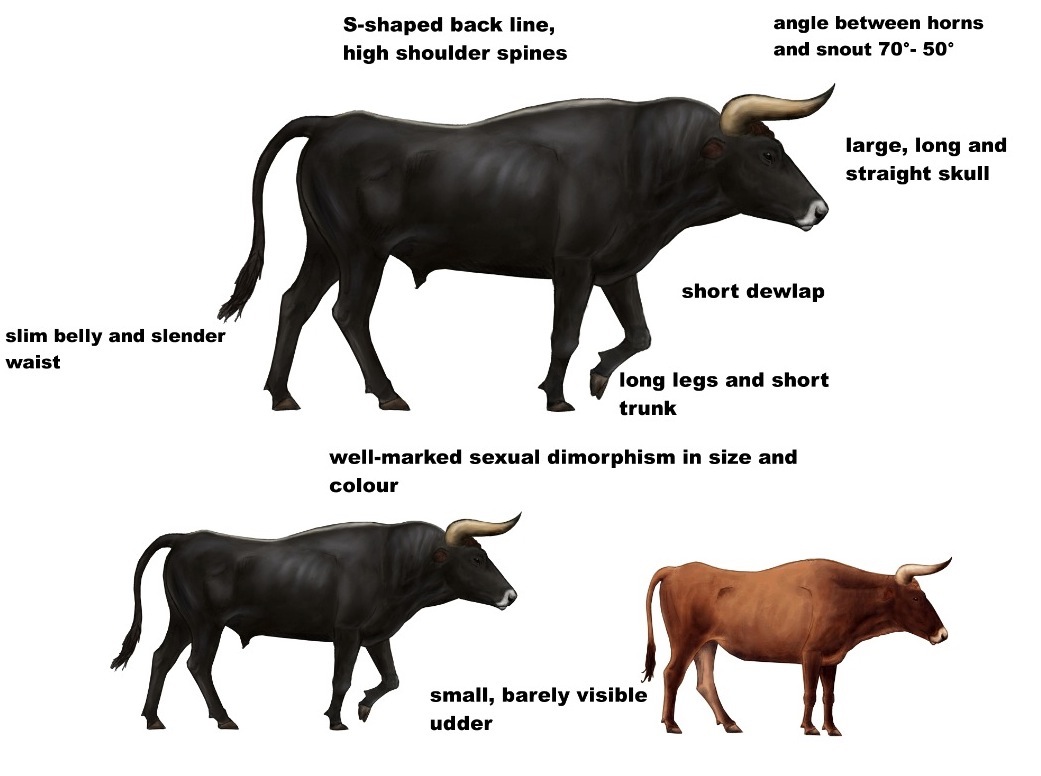
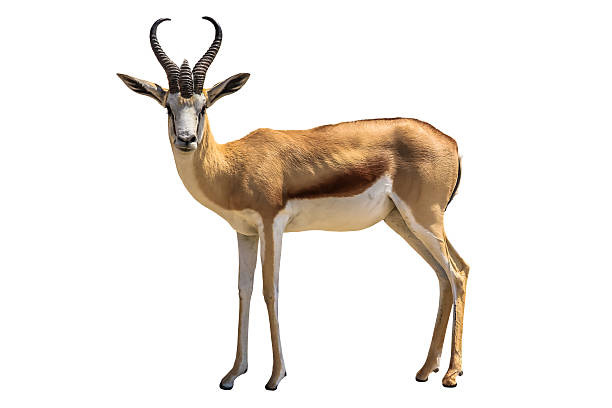

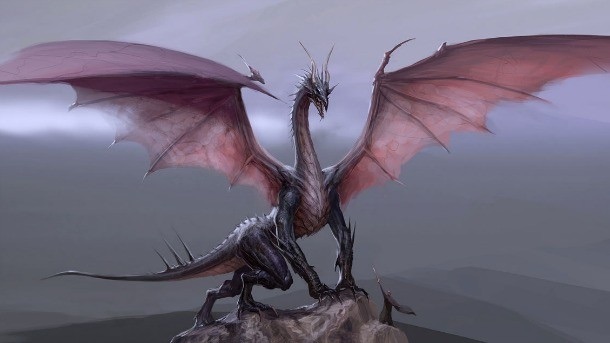
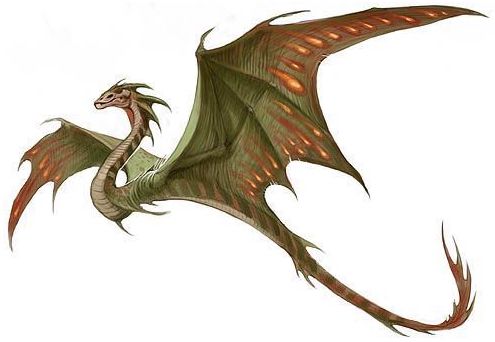
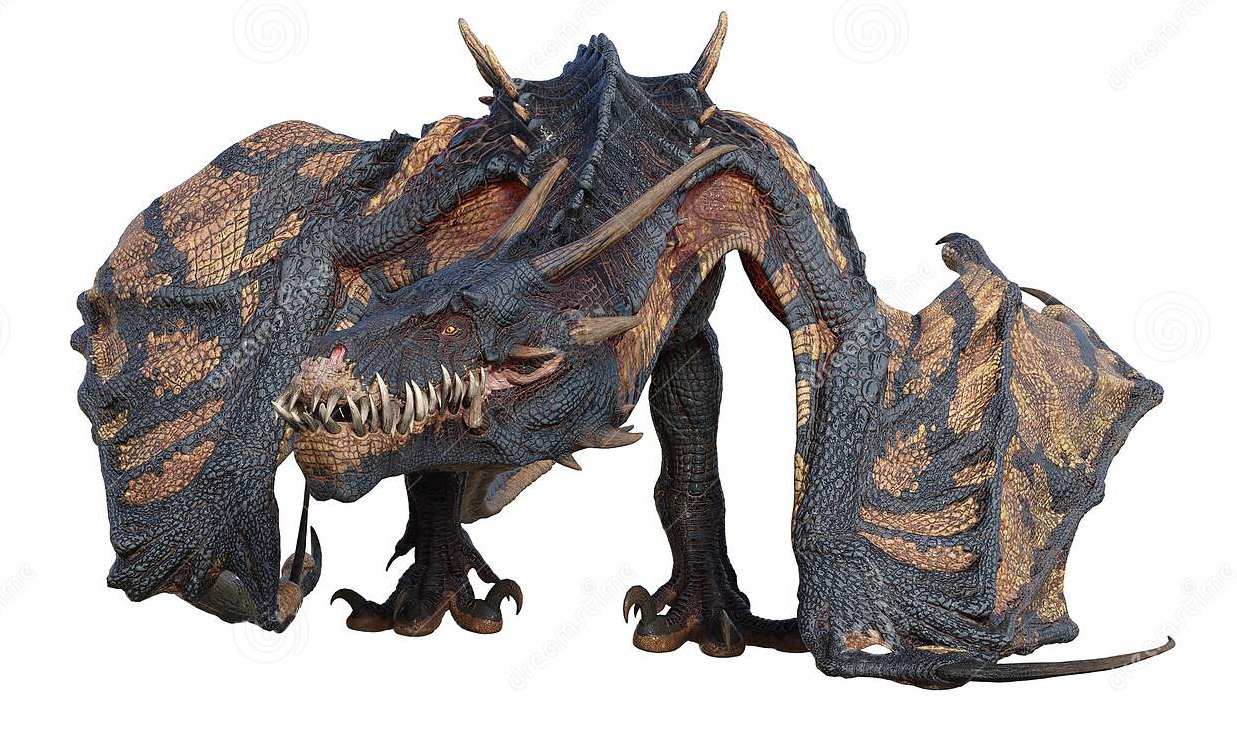
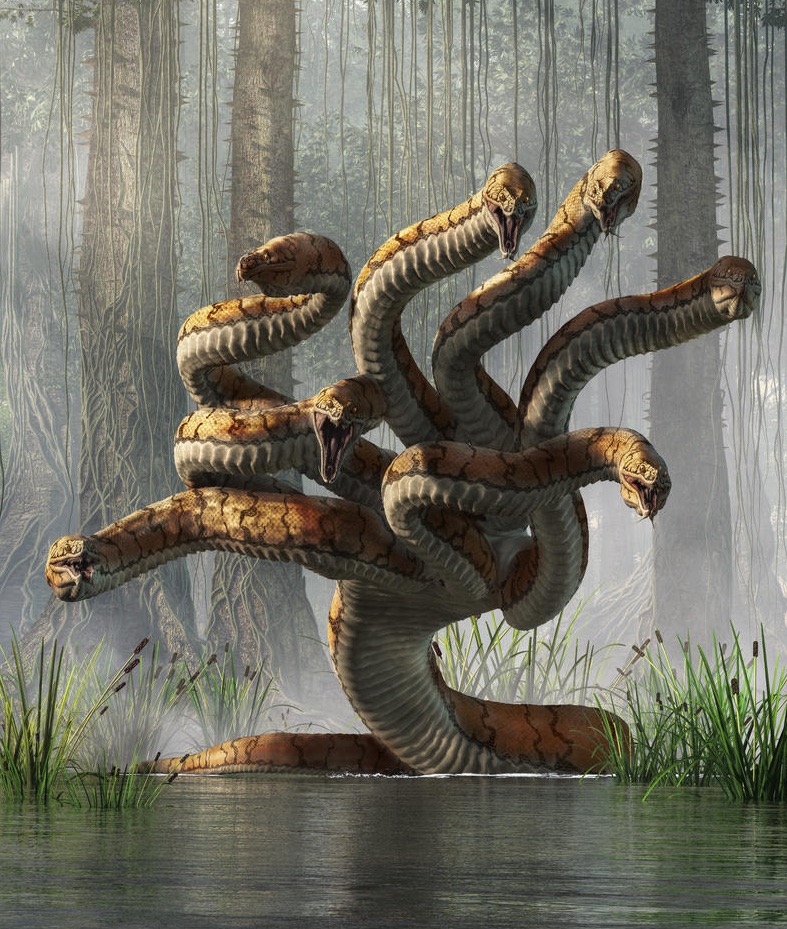
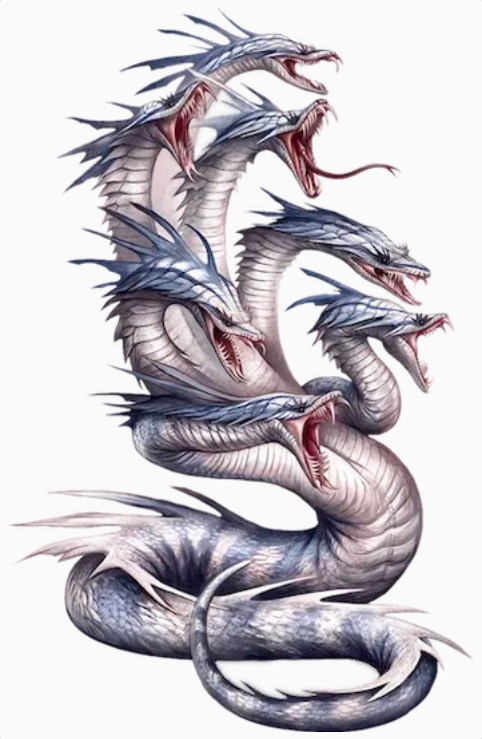
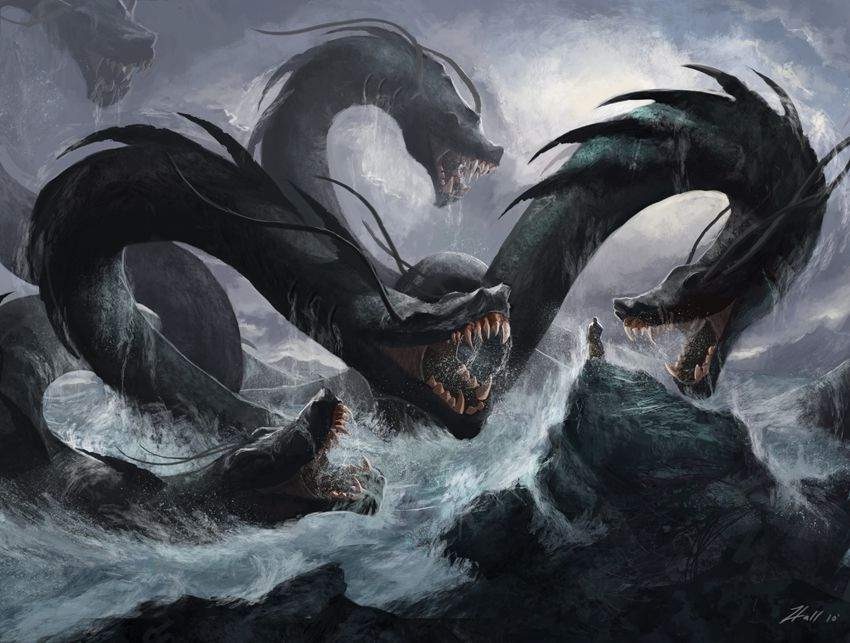
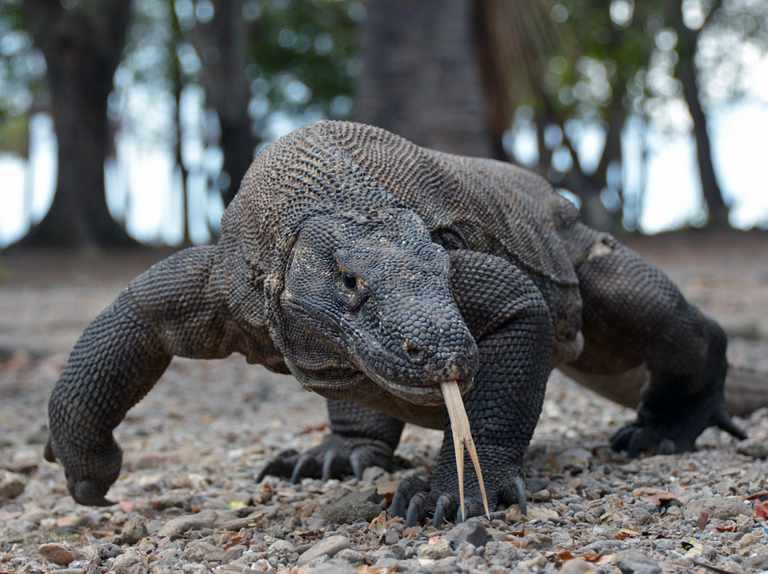

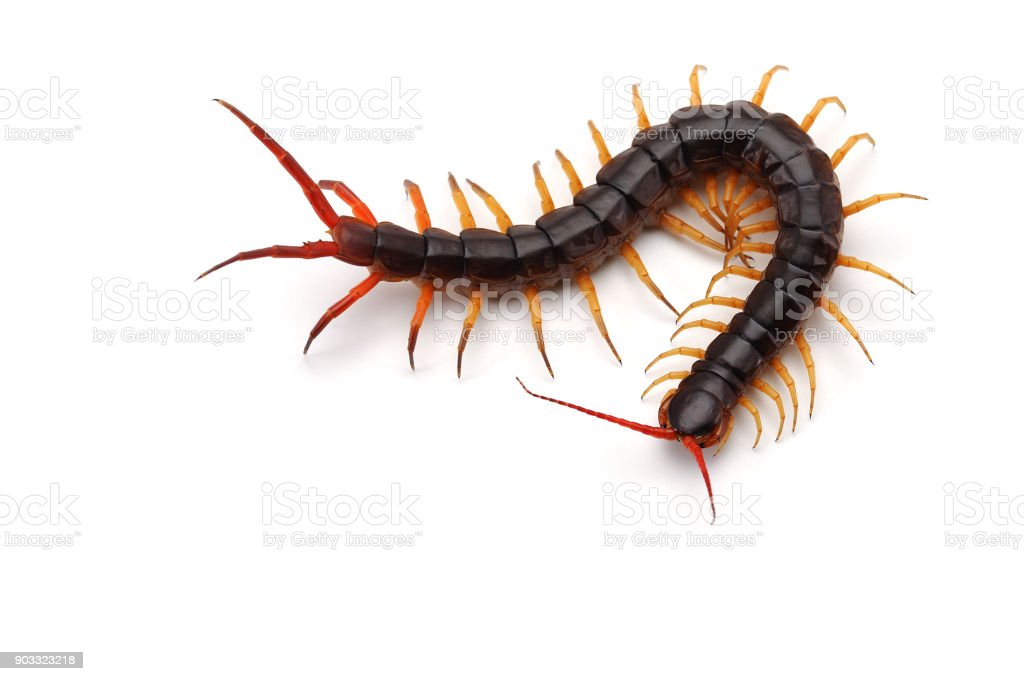
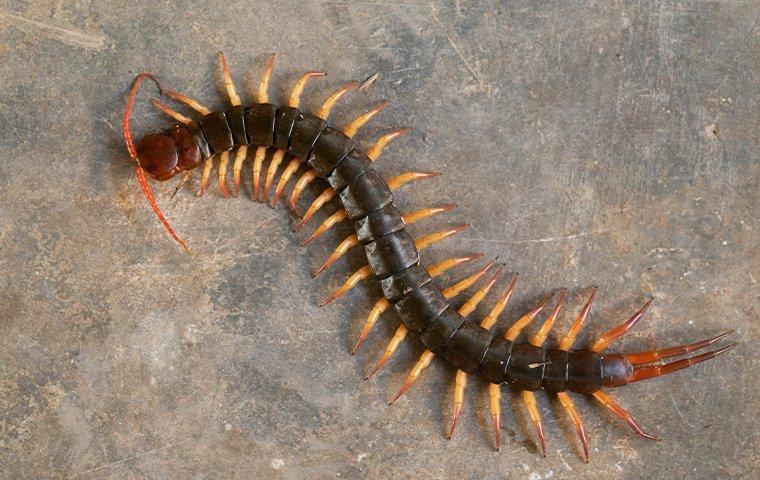
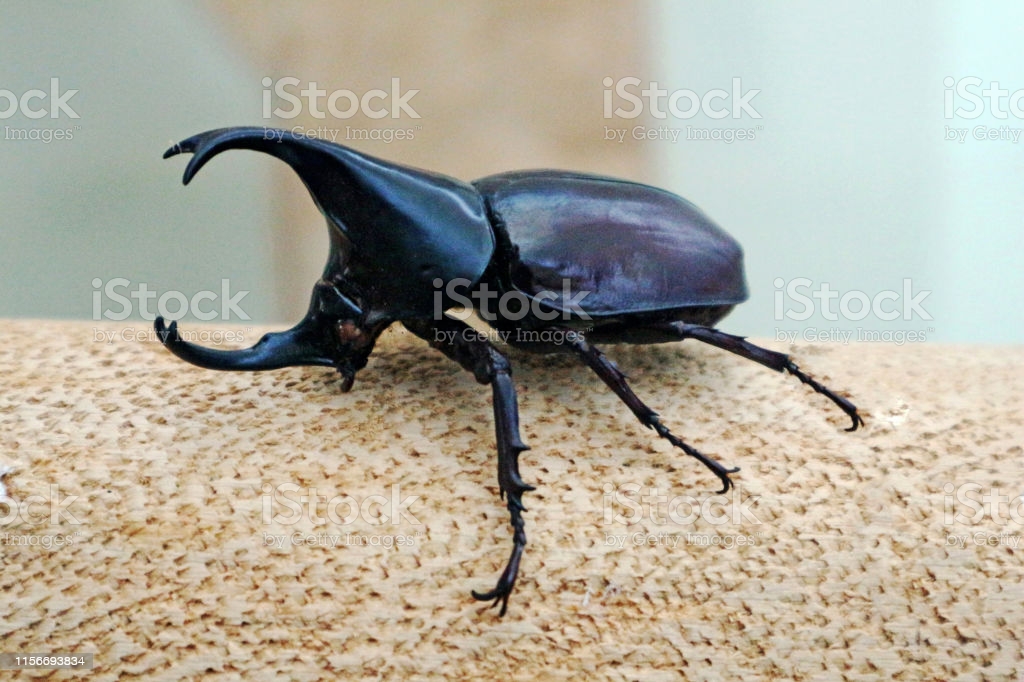
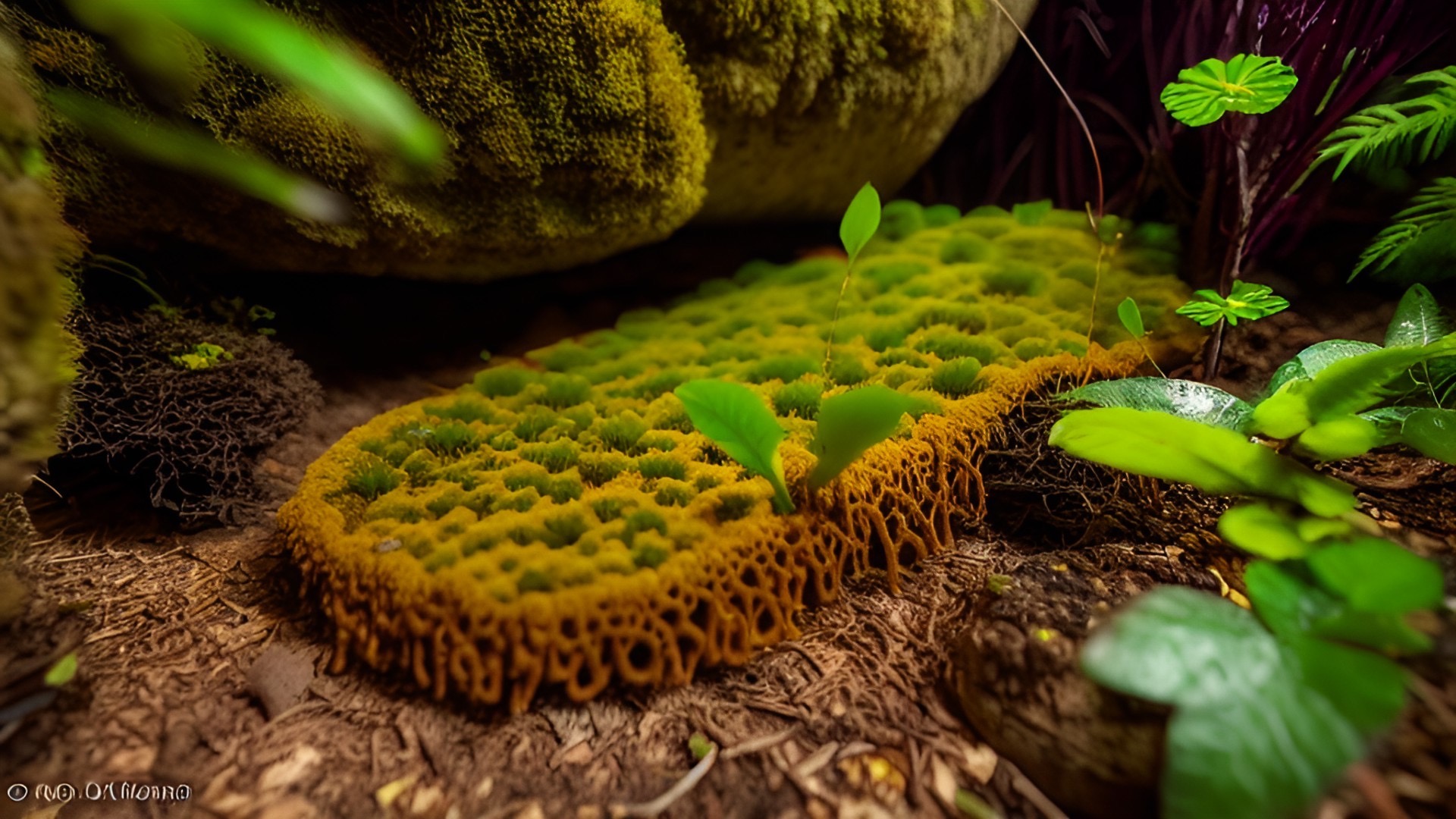
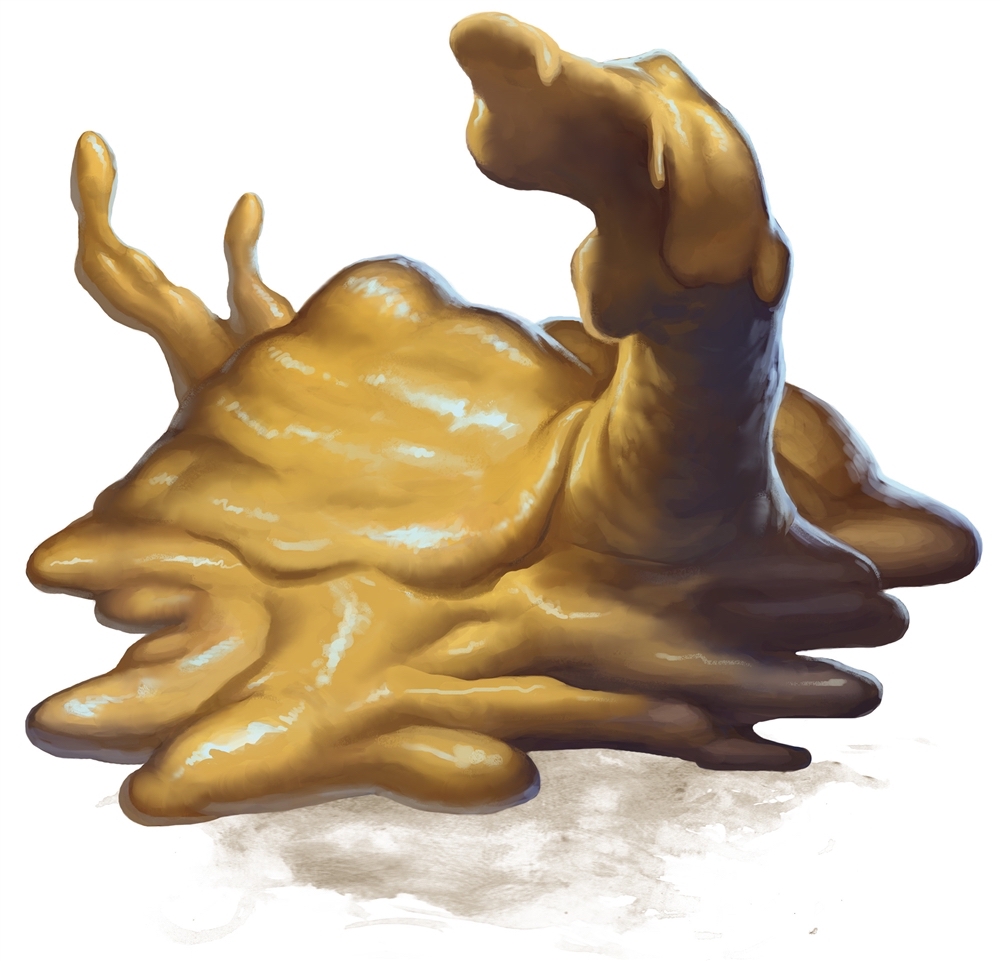

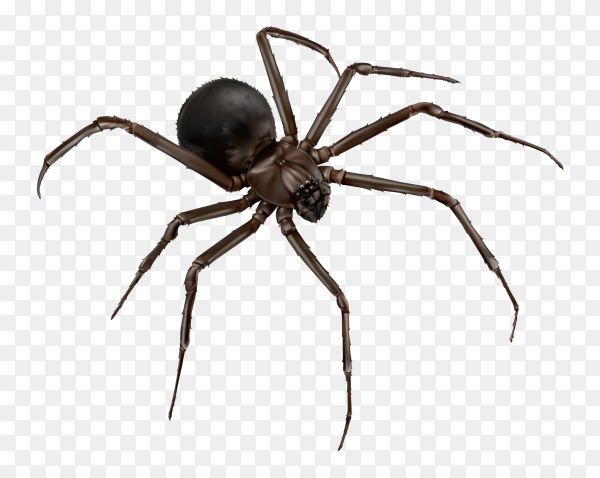
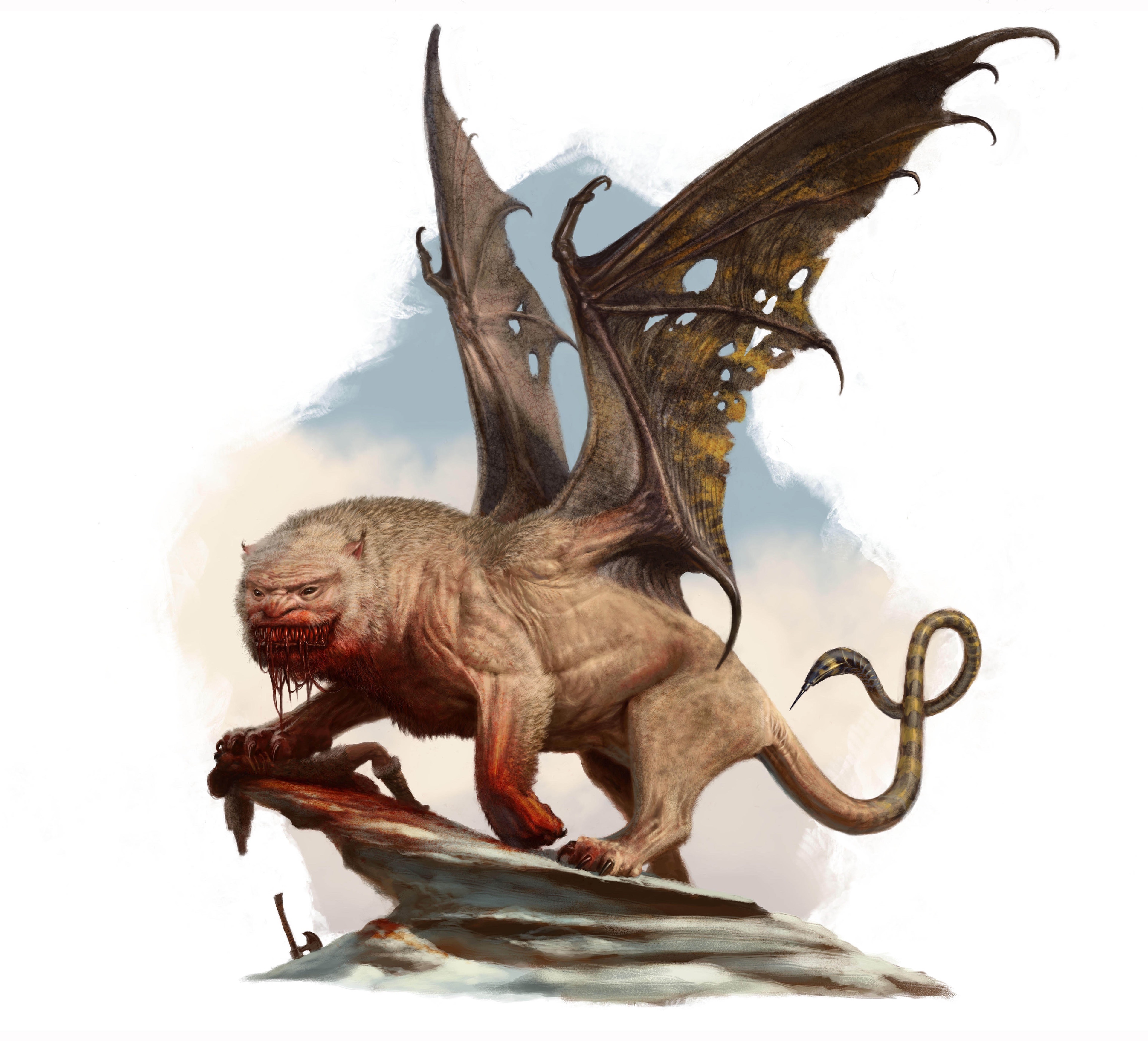
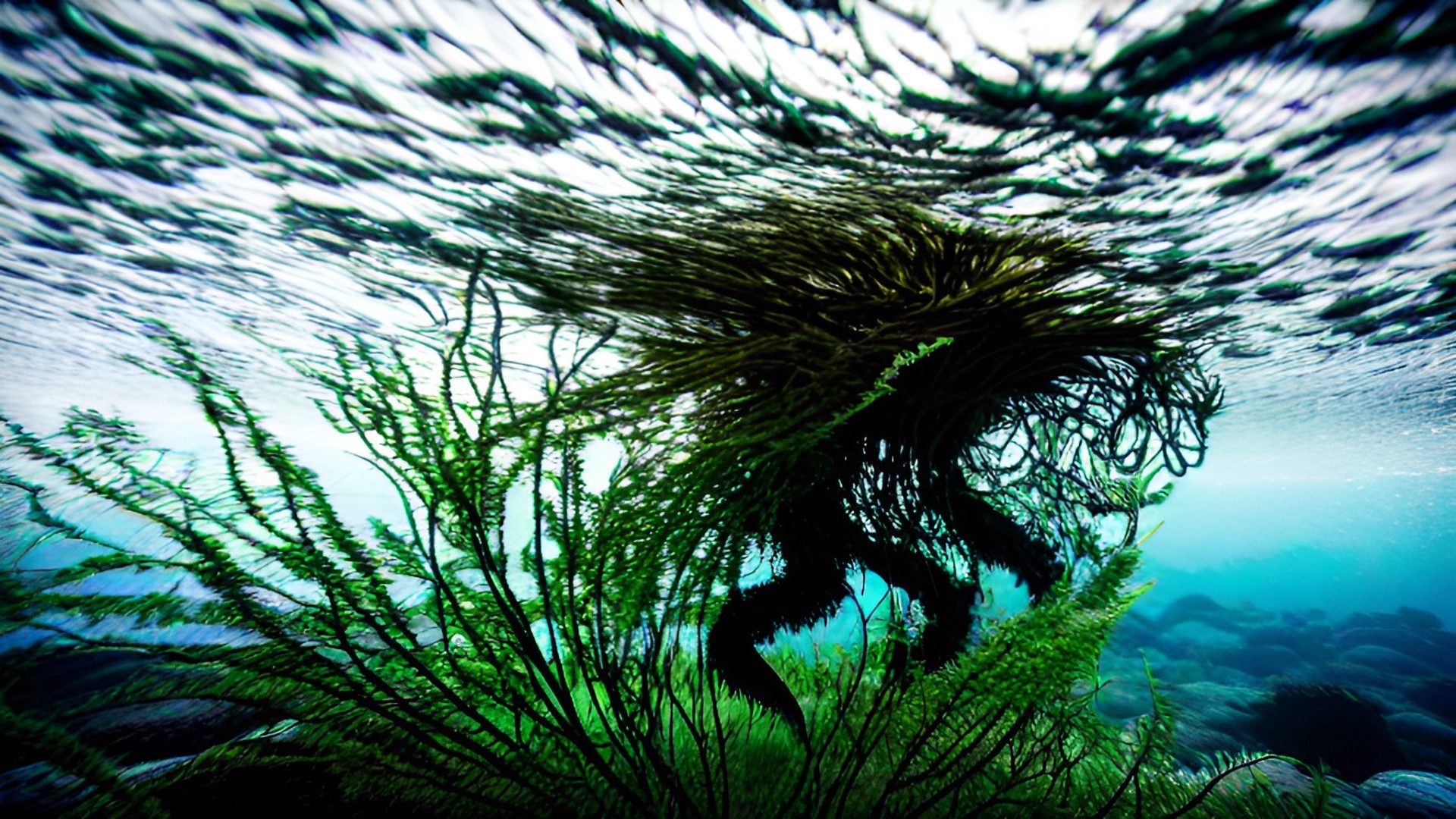
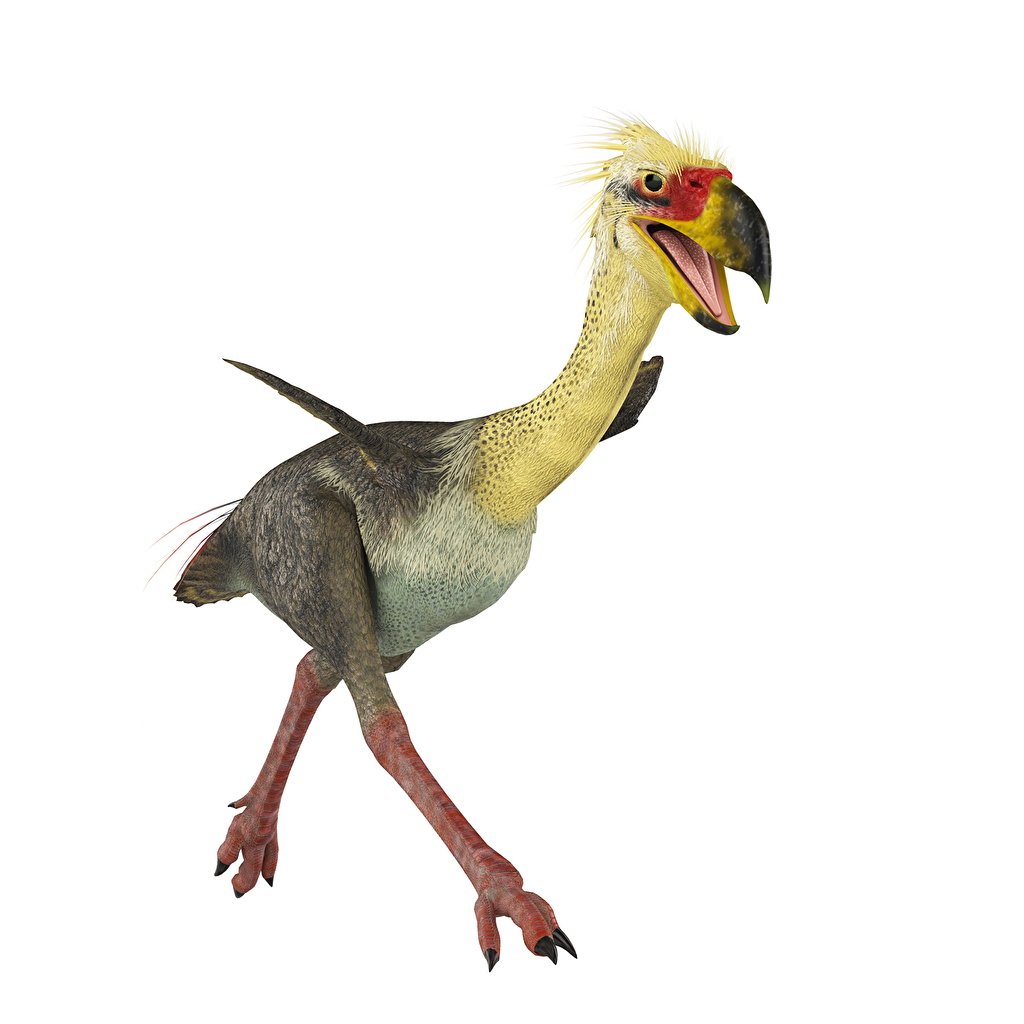
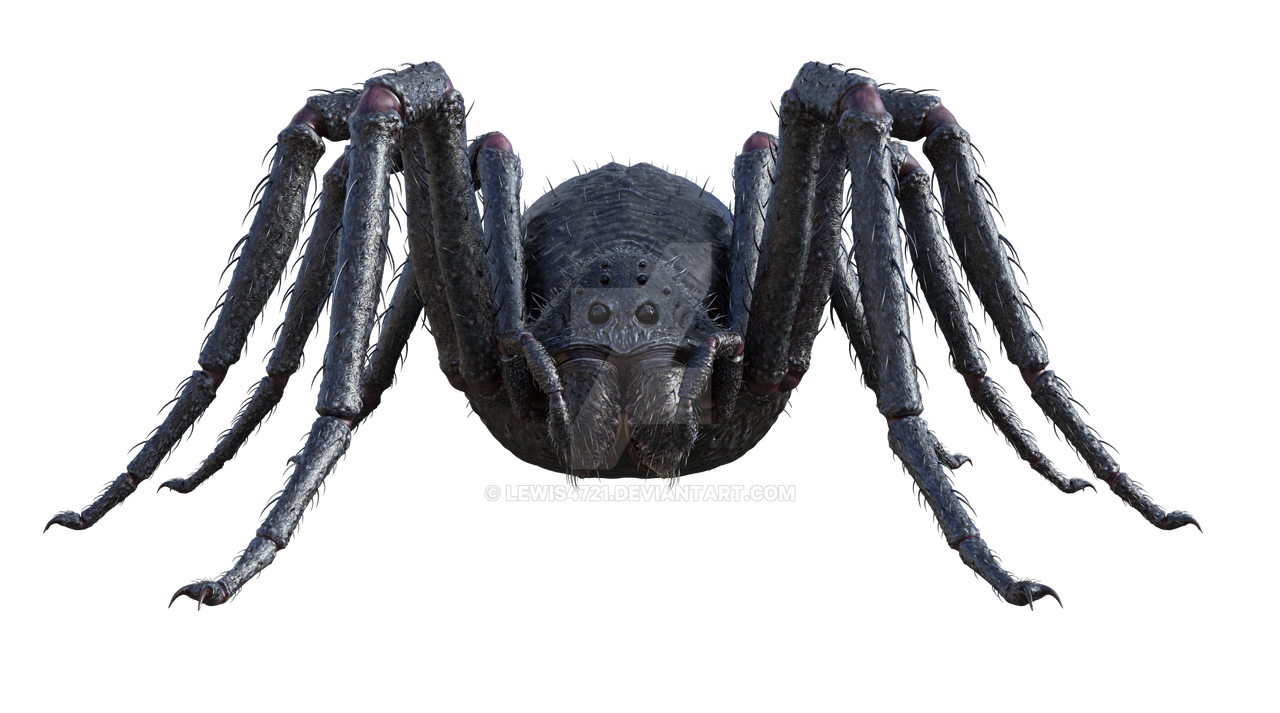
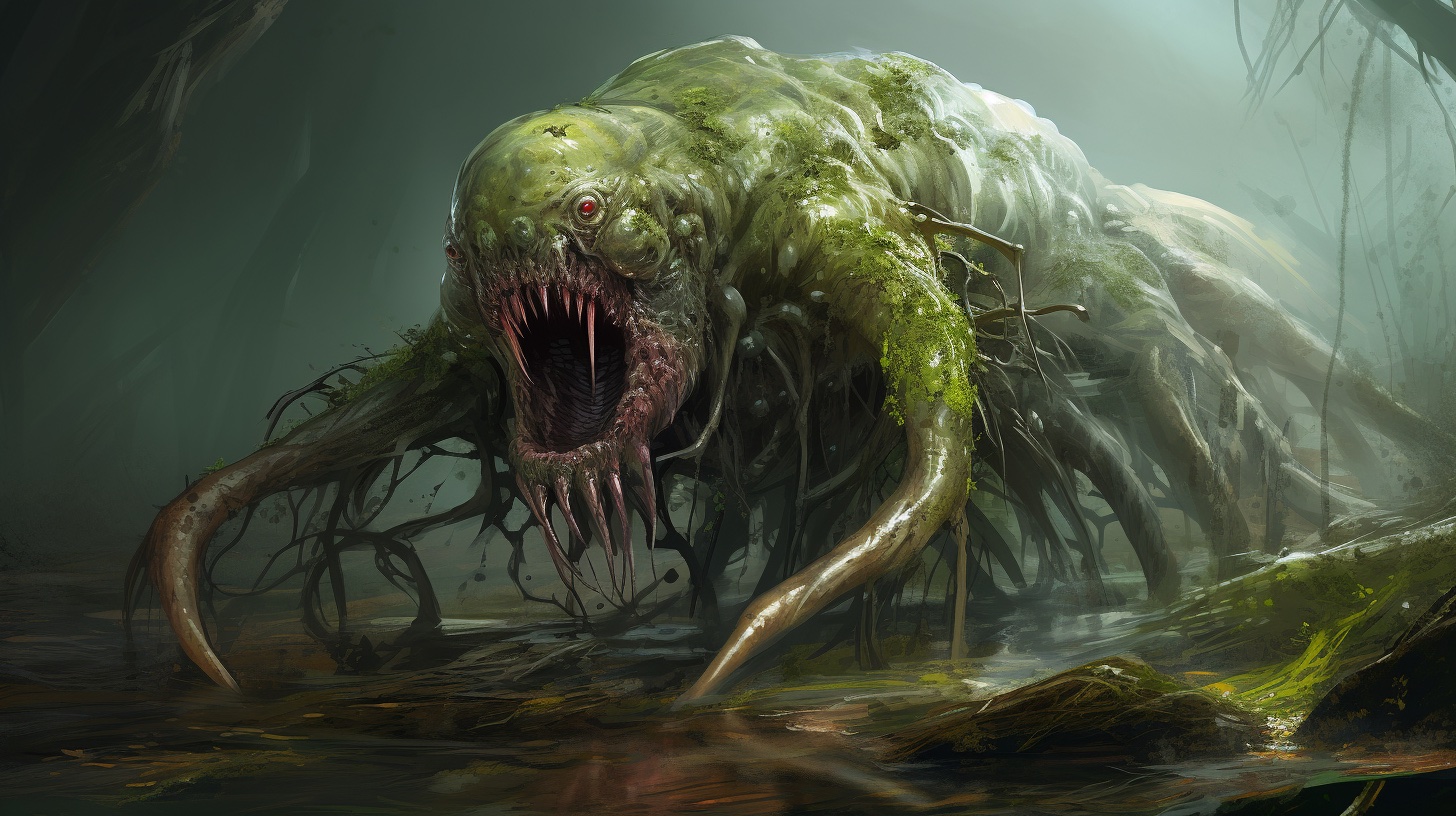
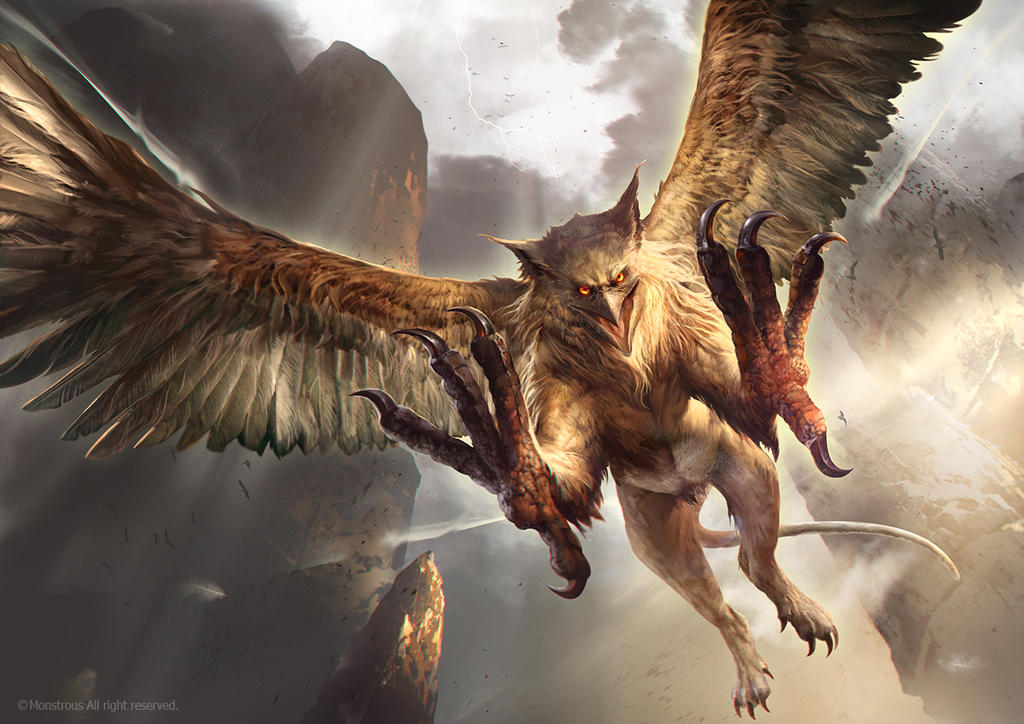



Comments